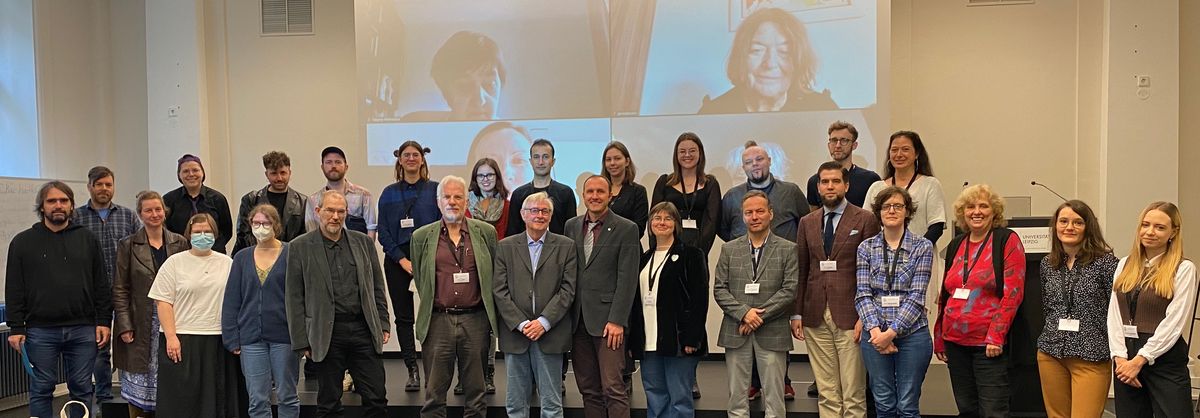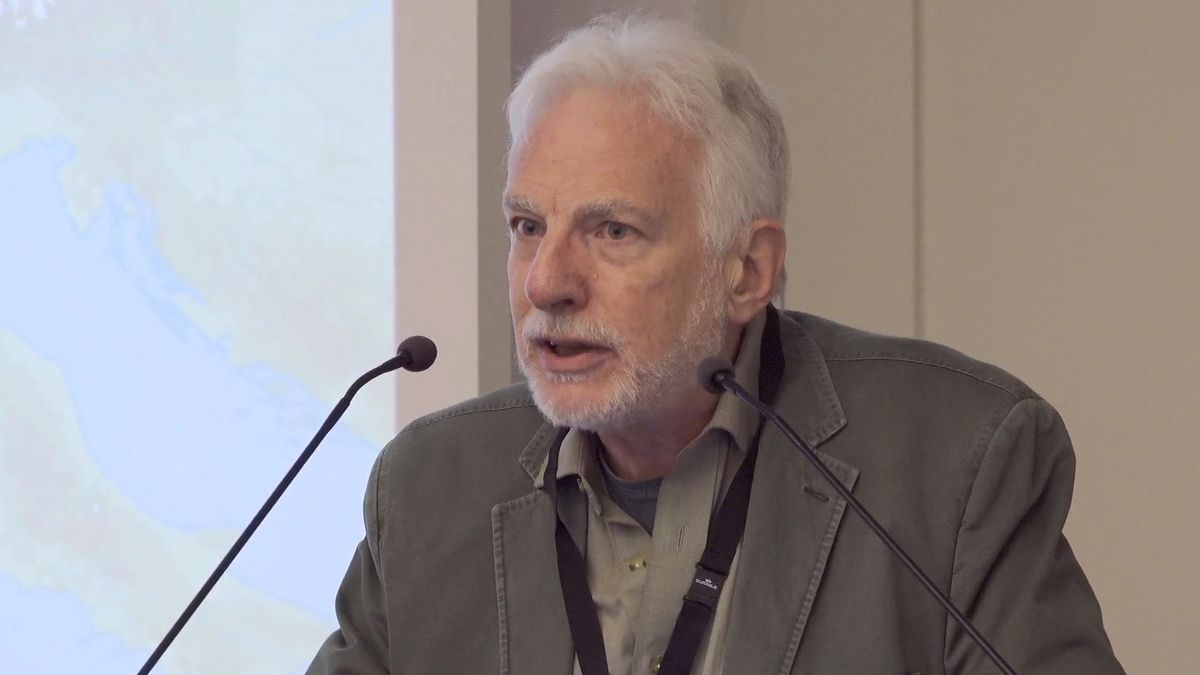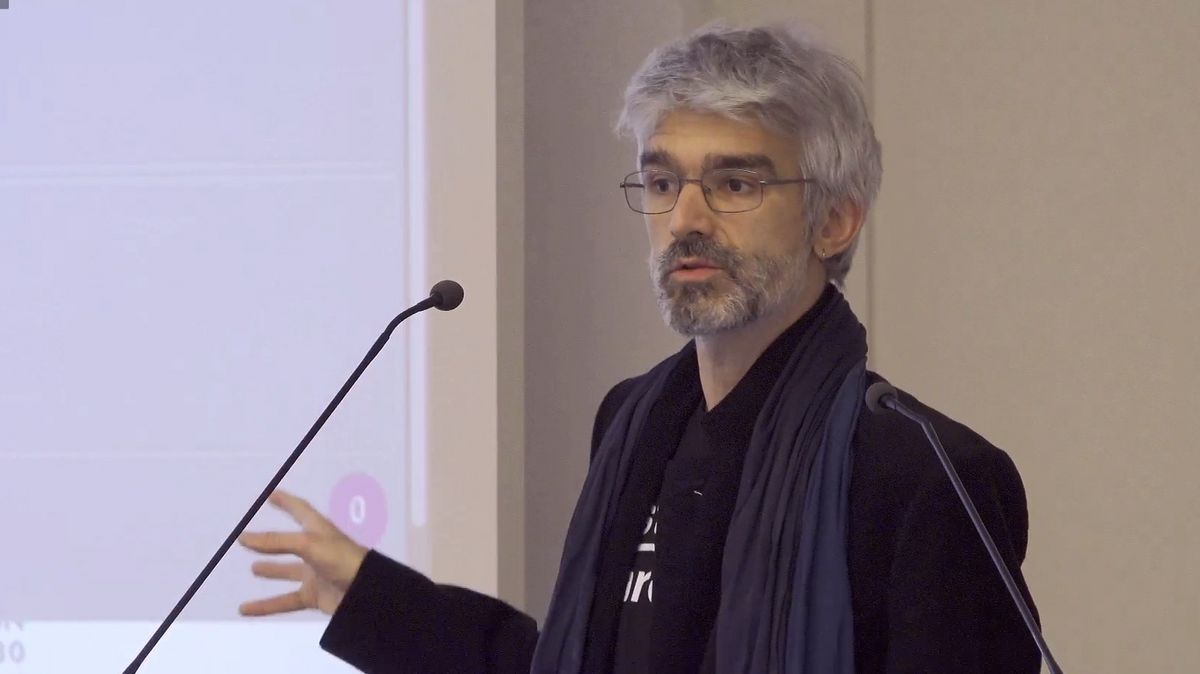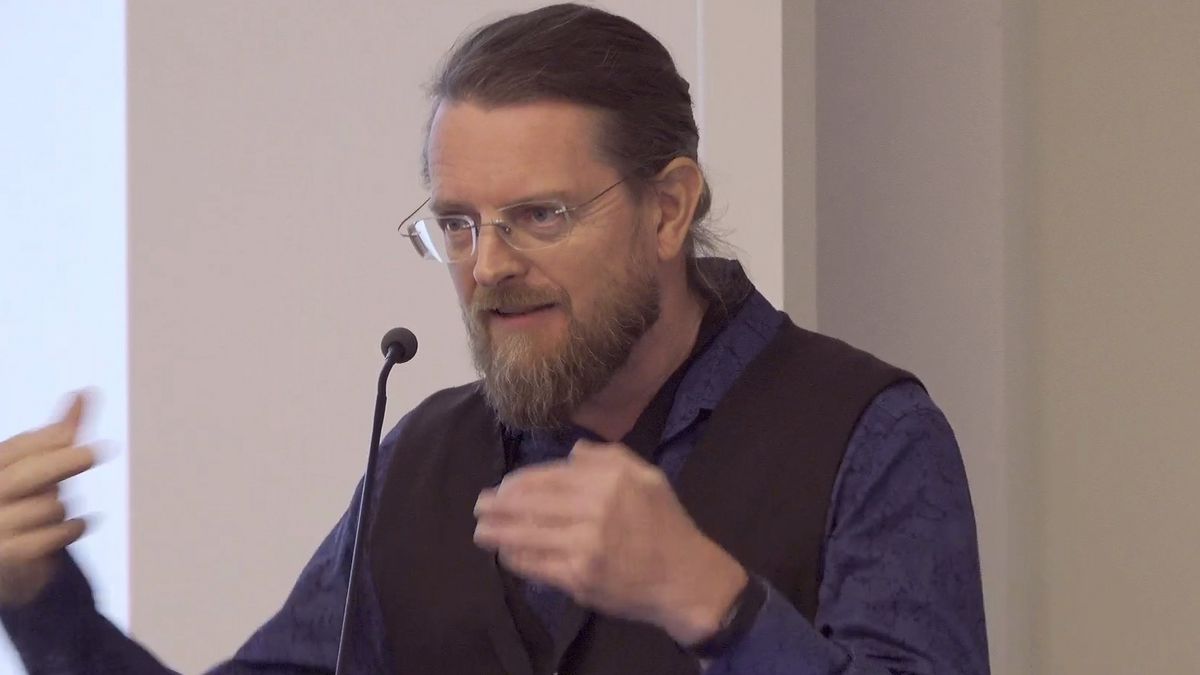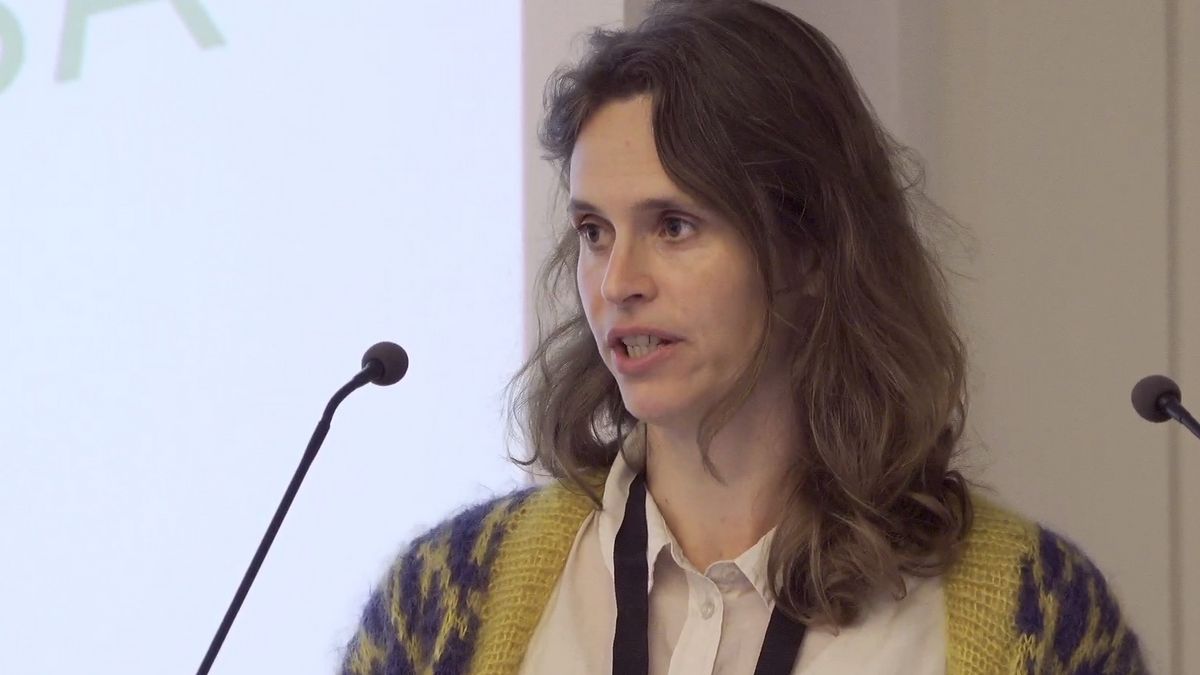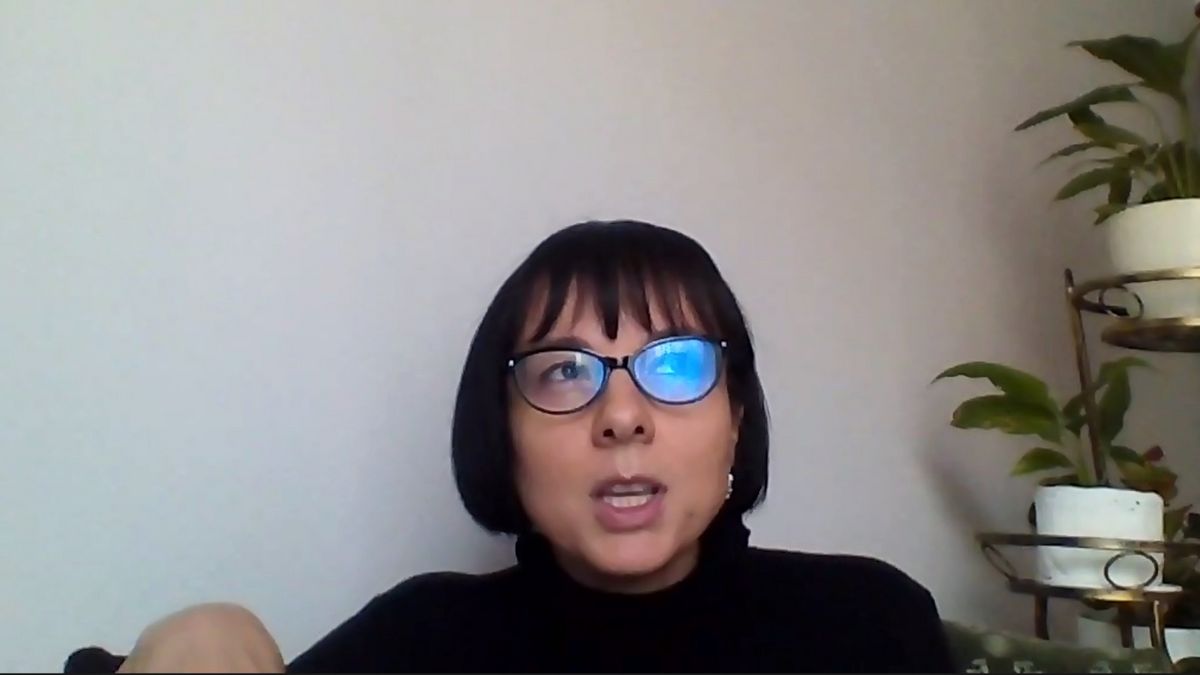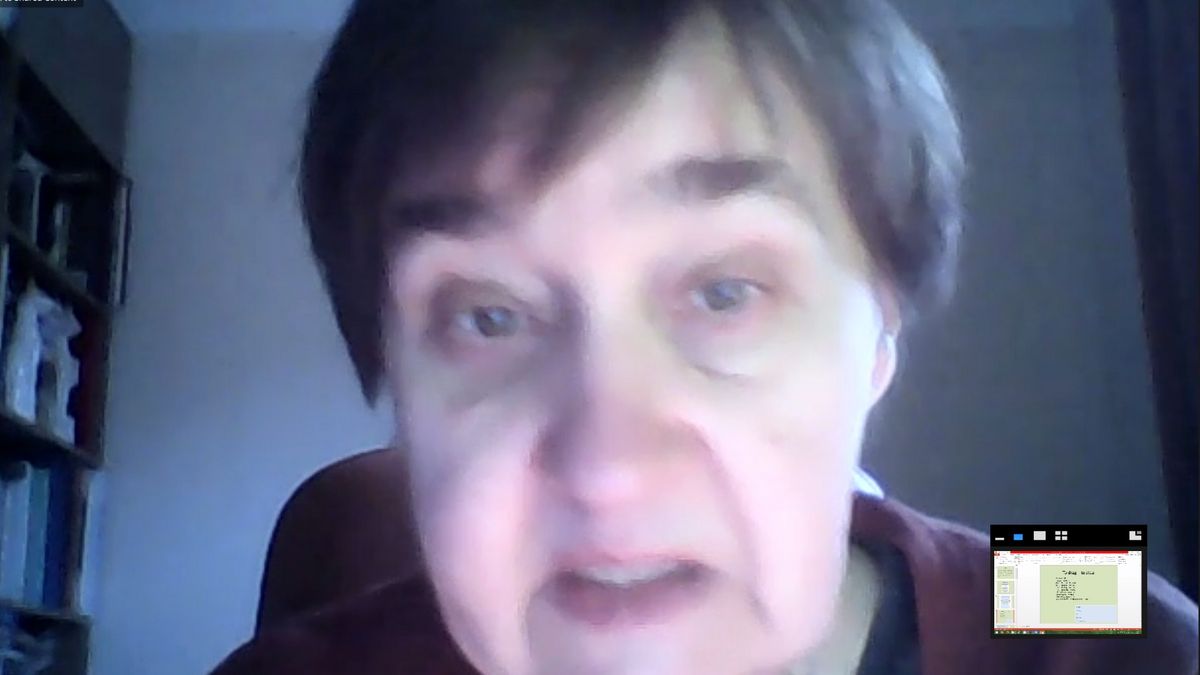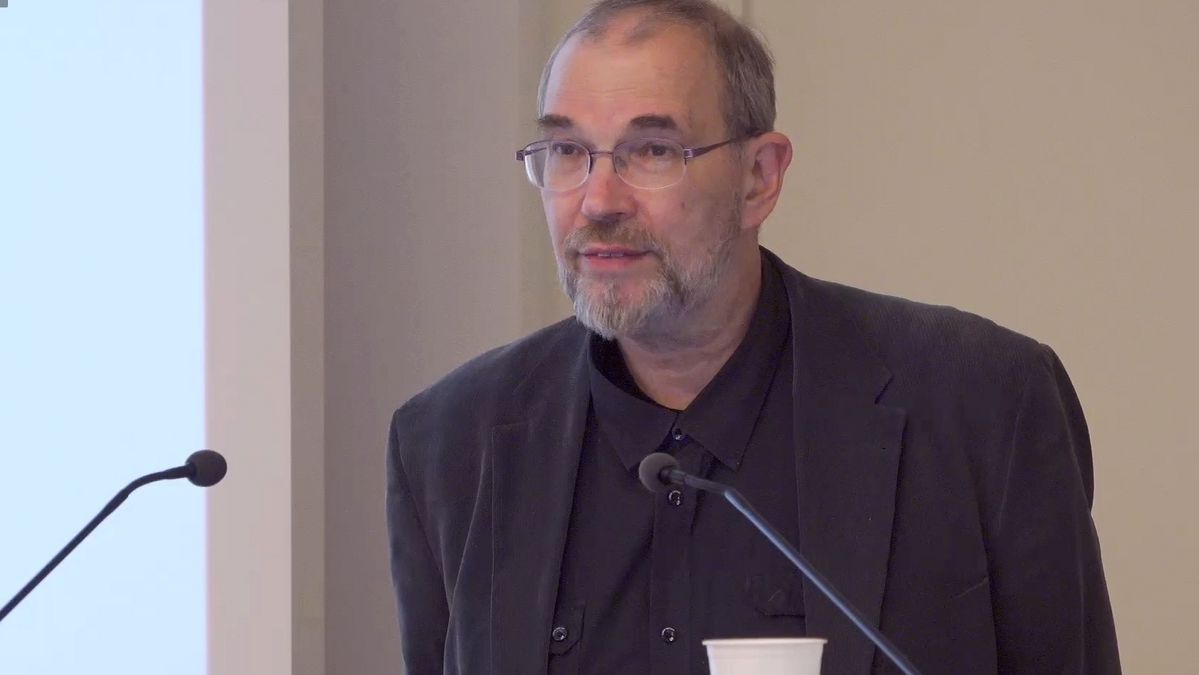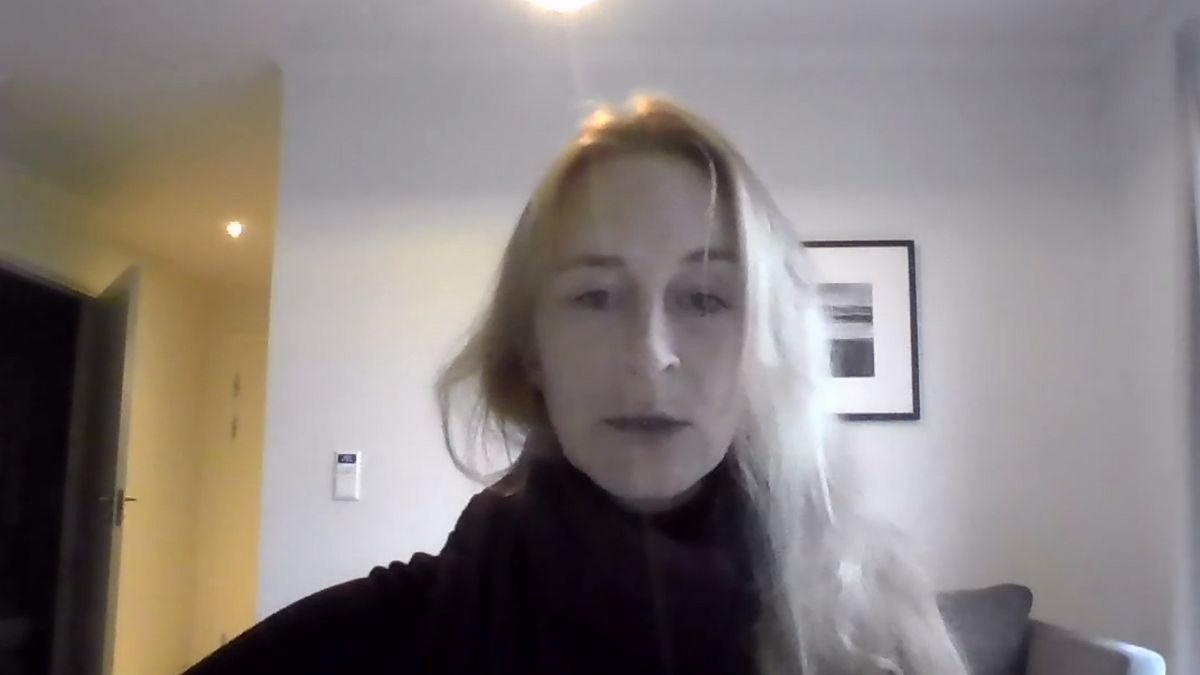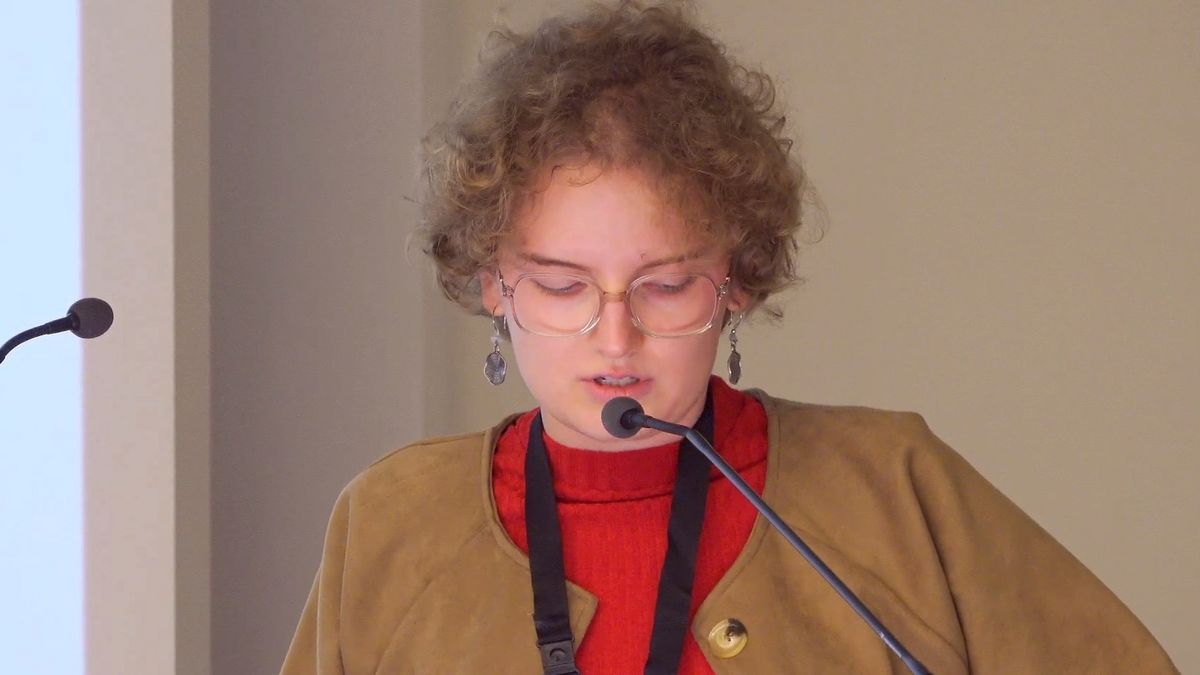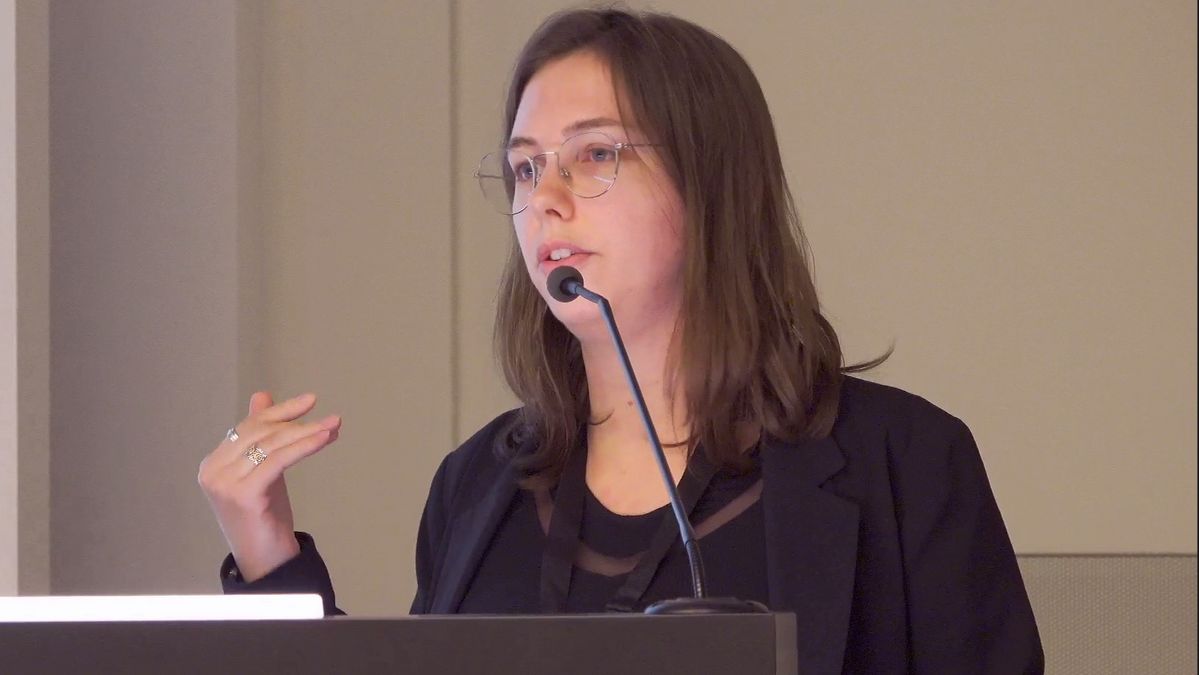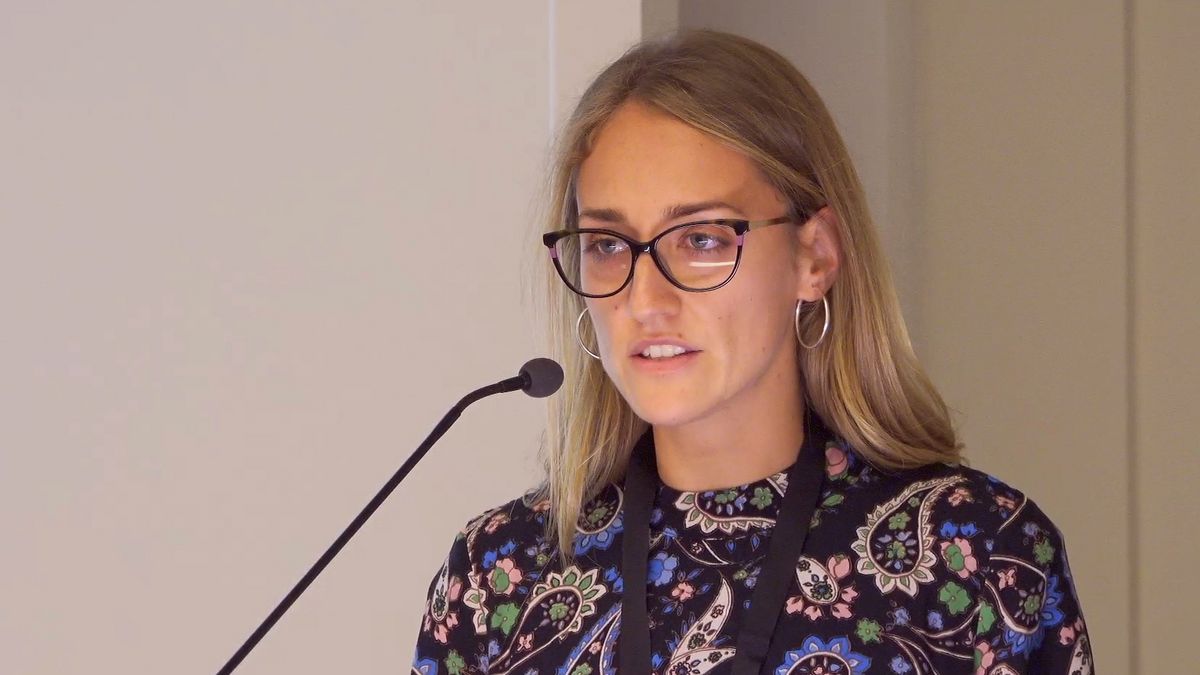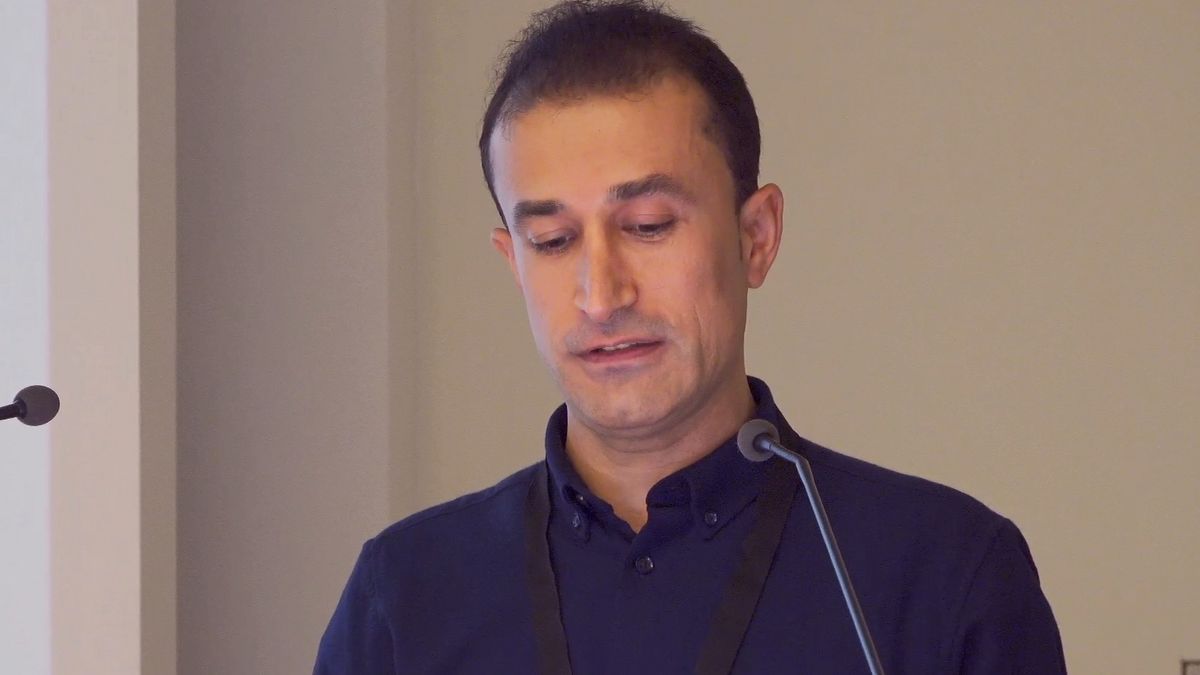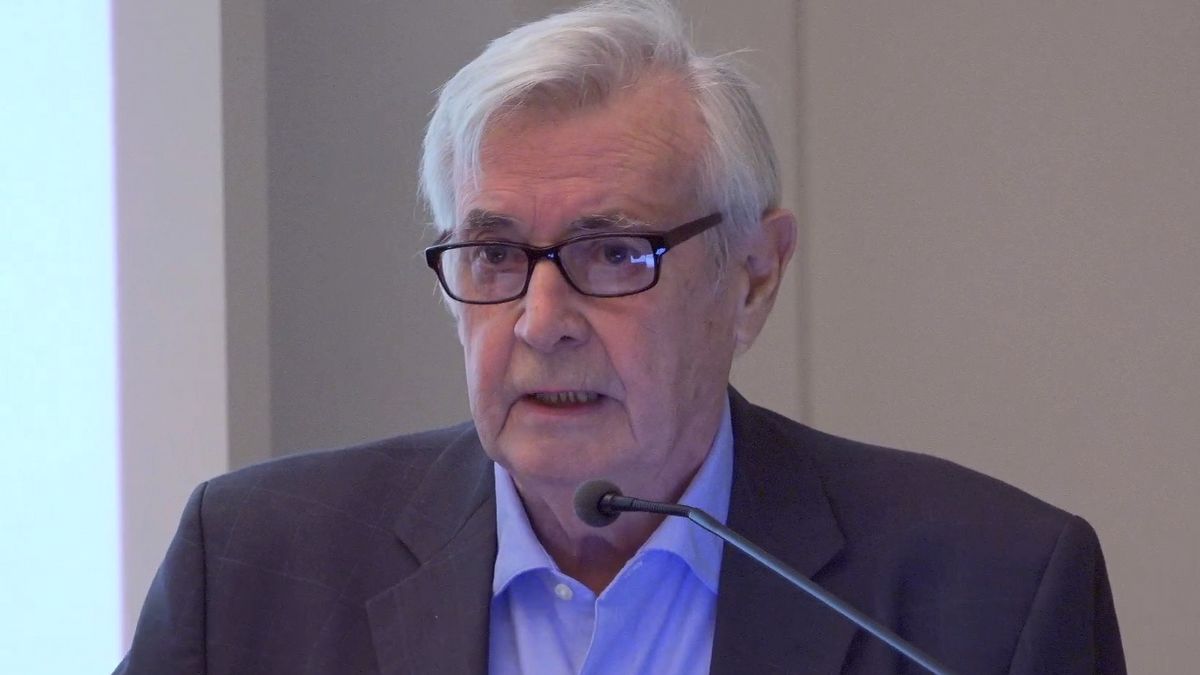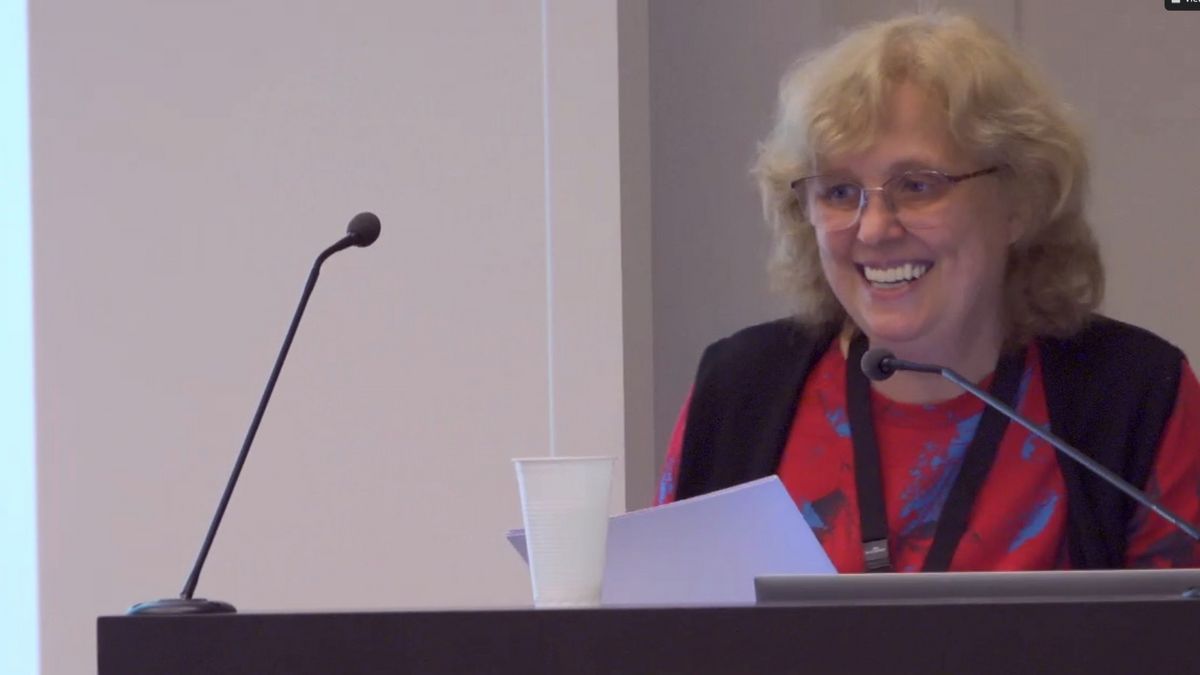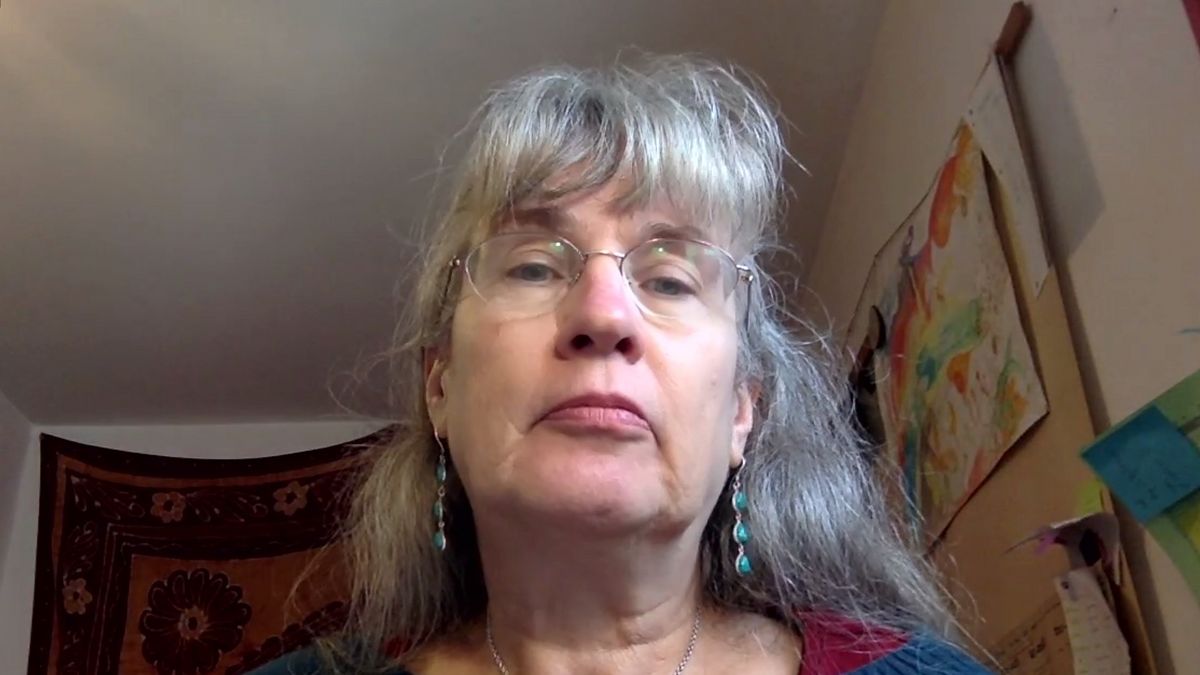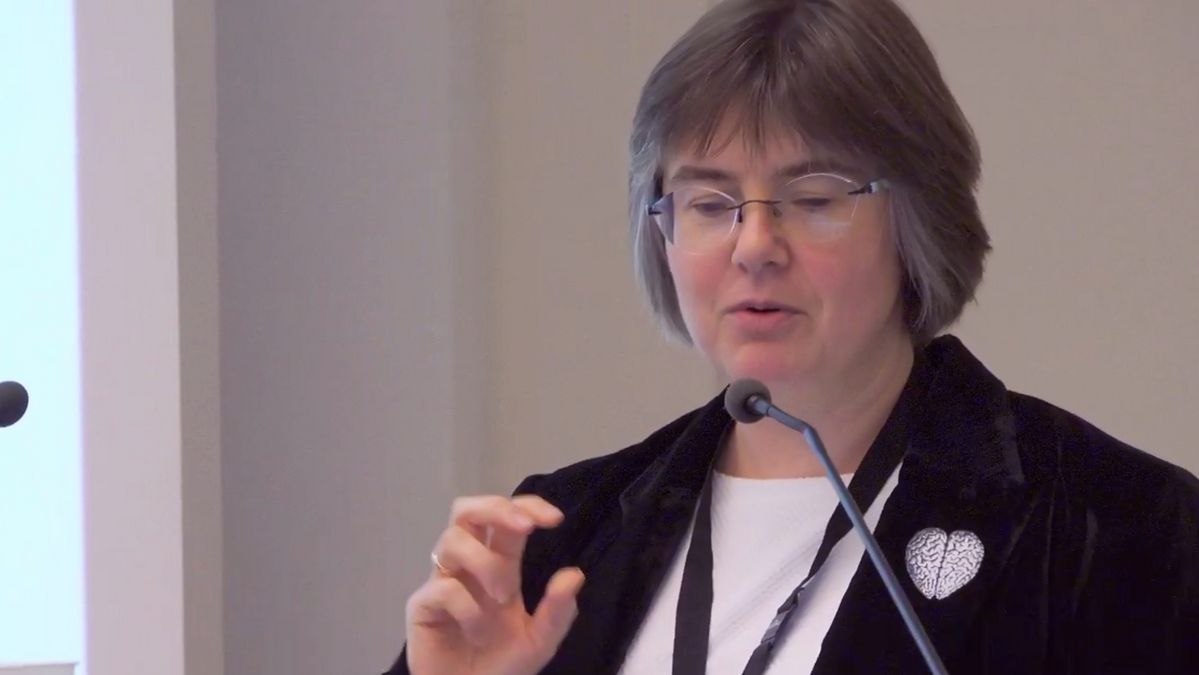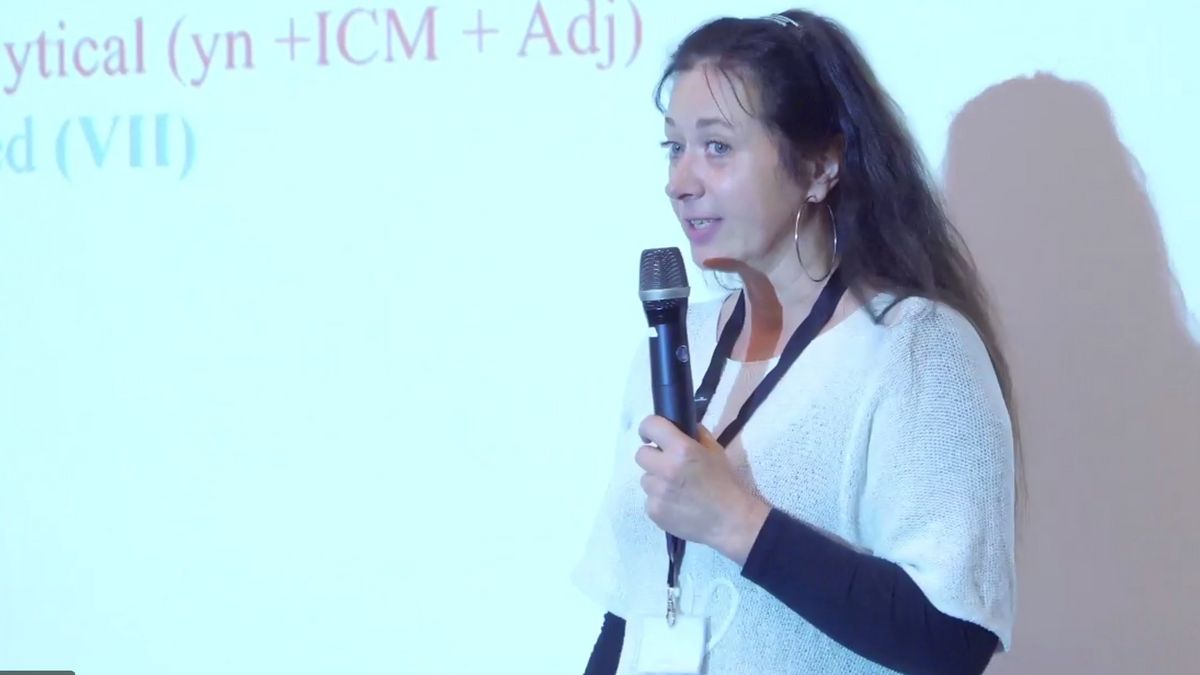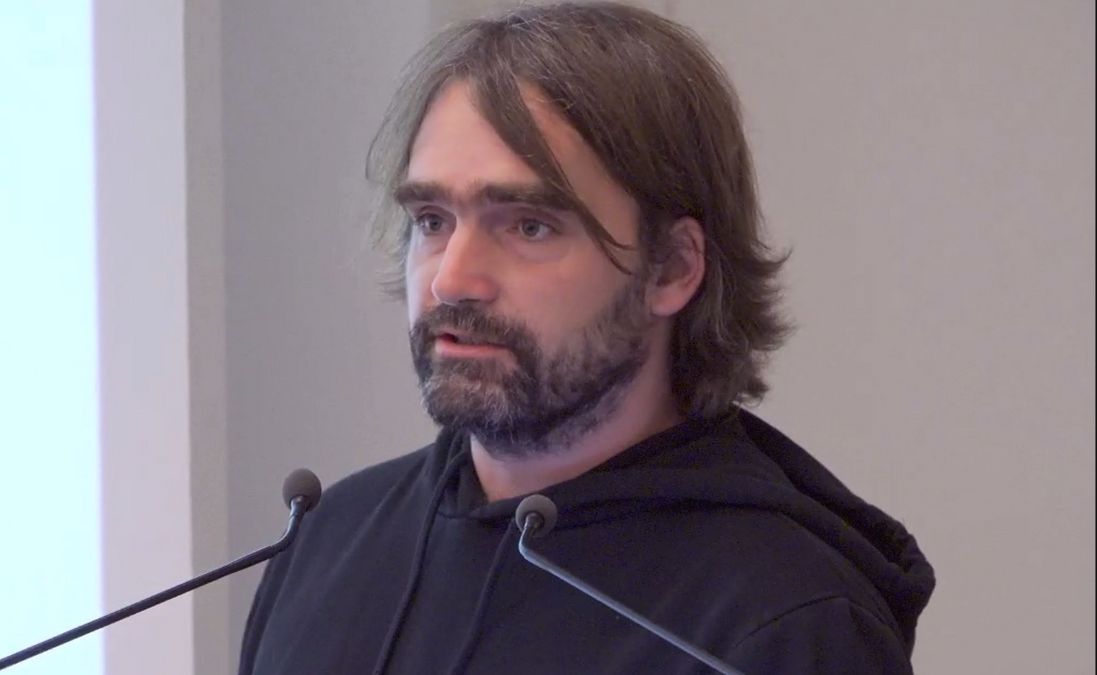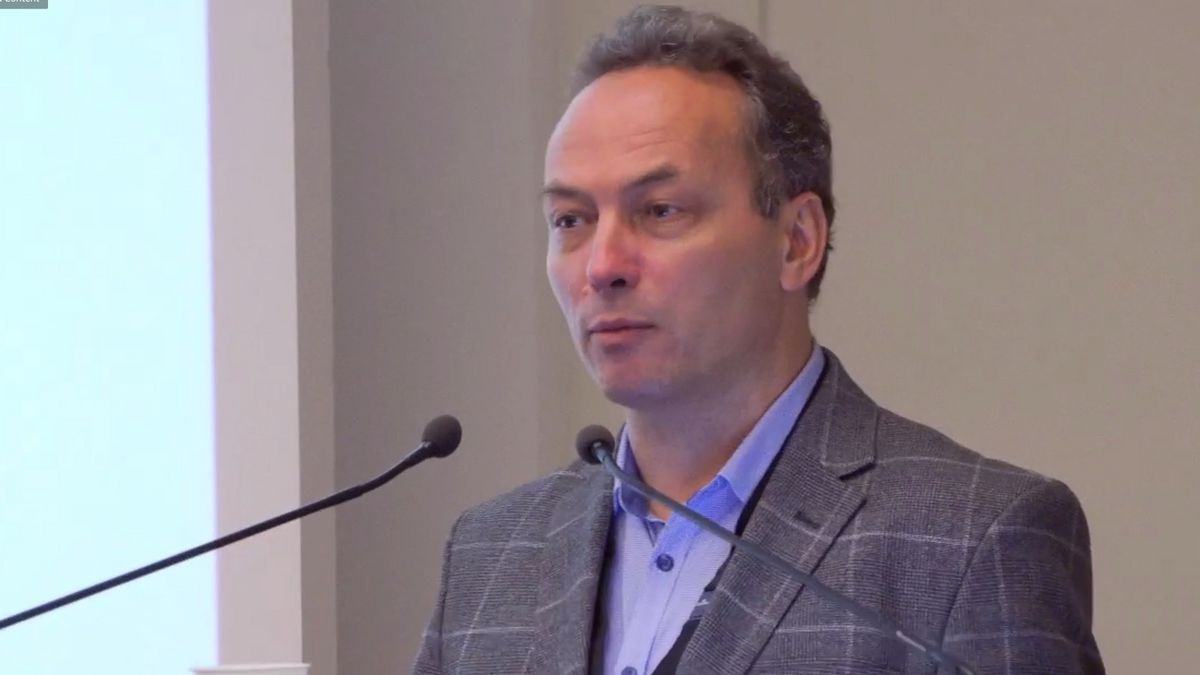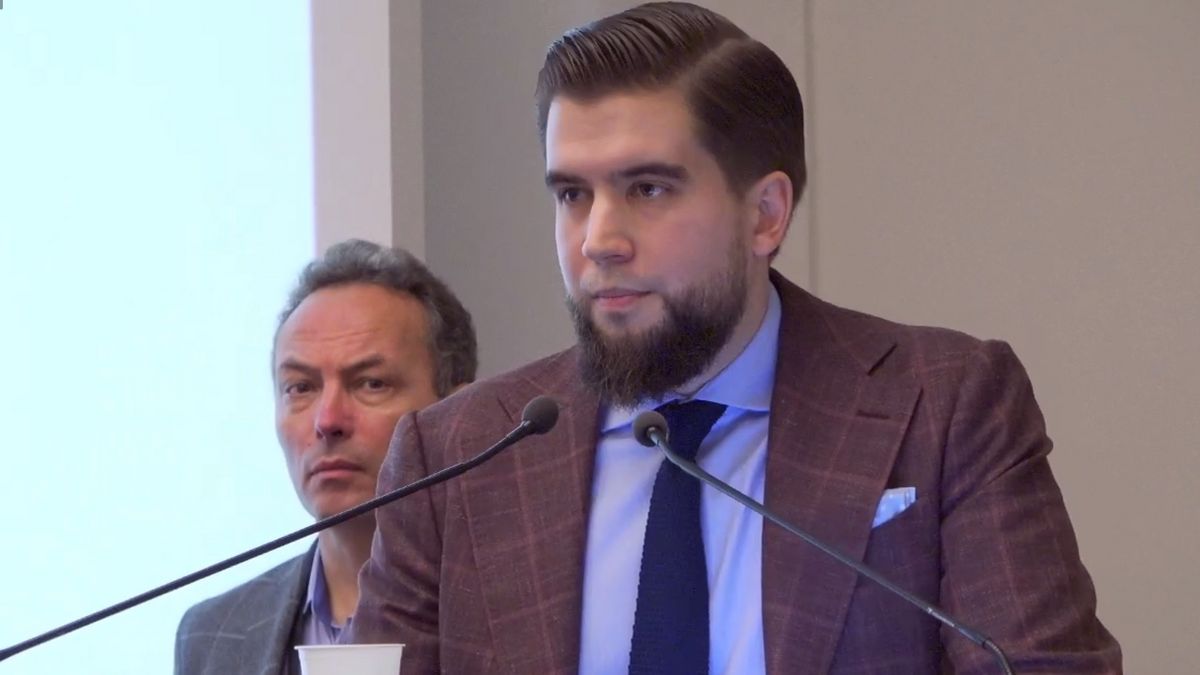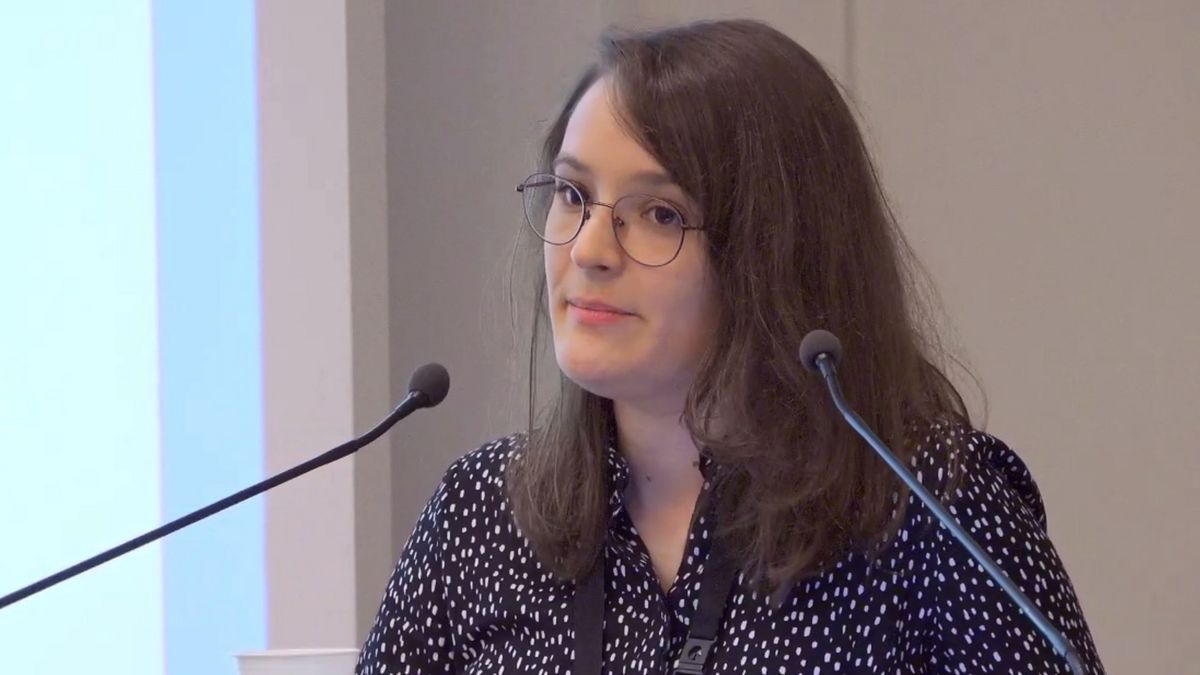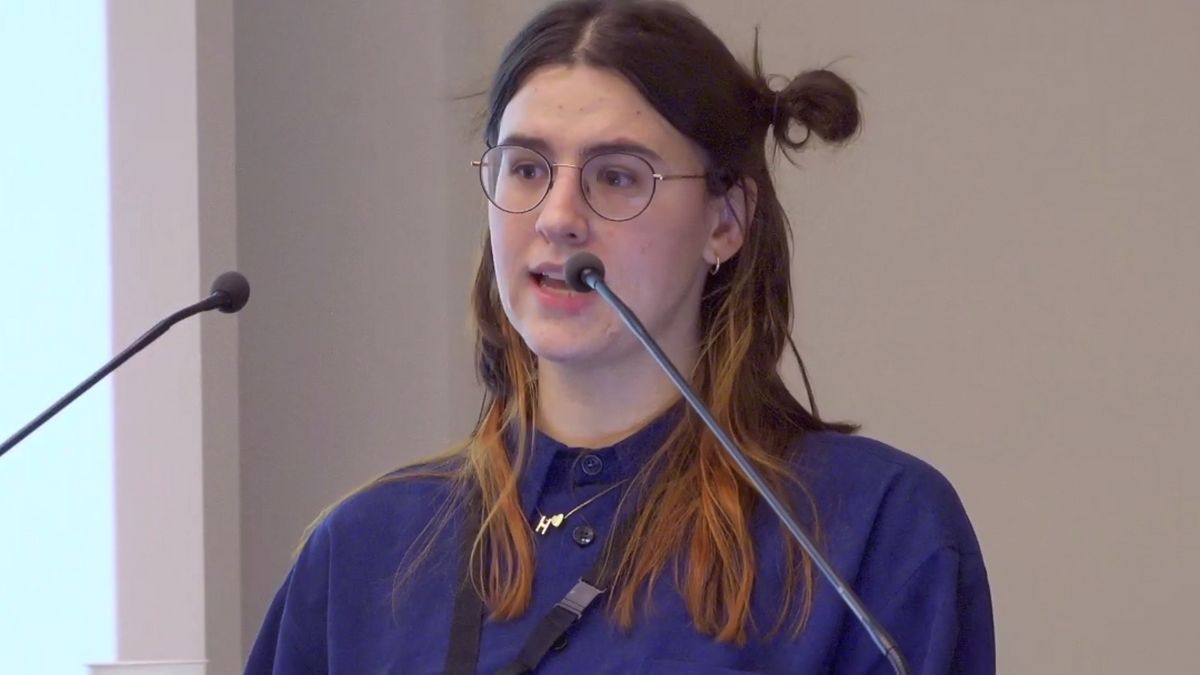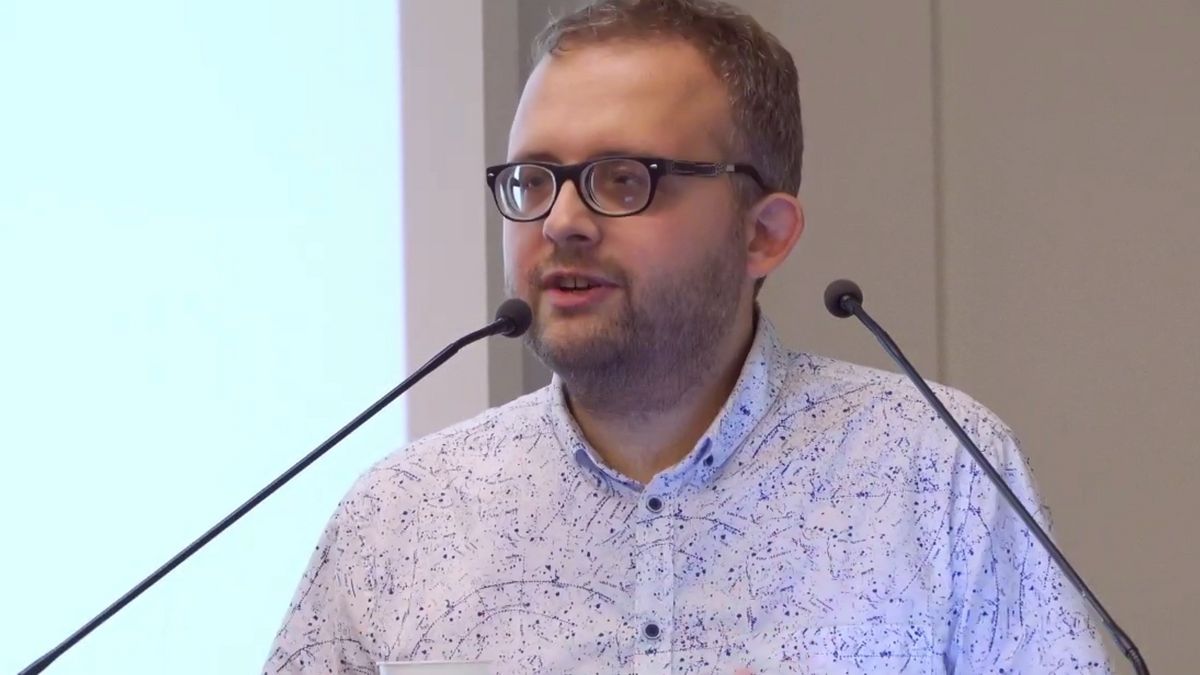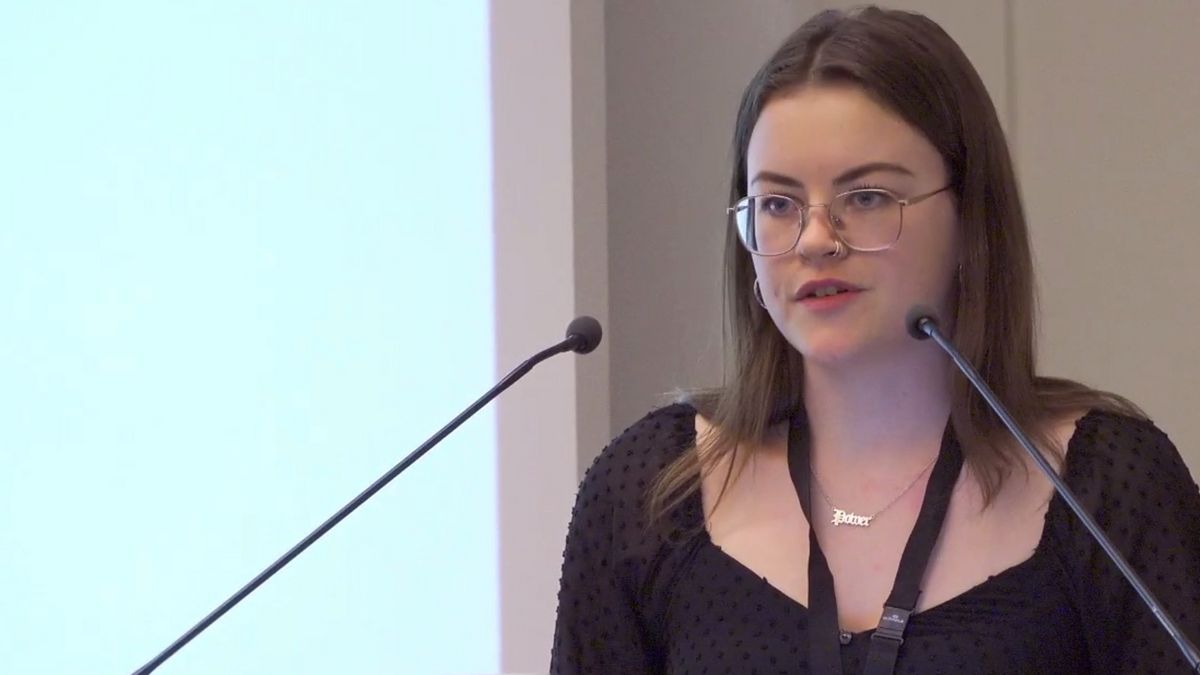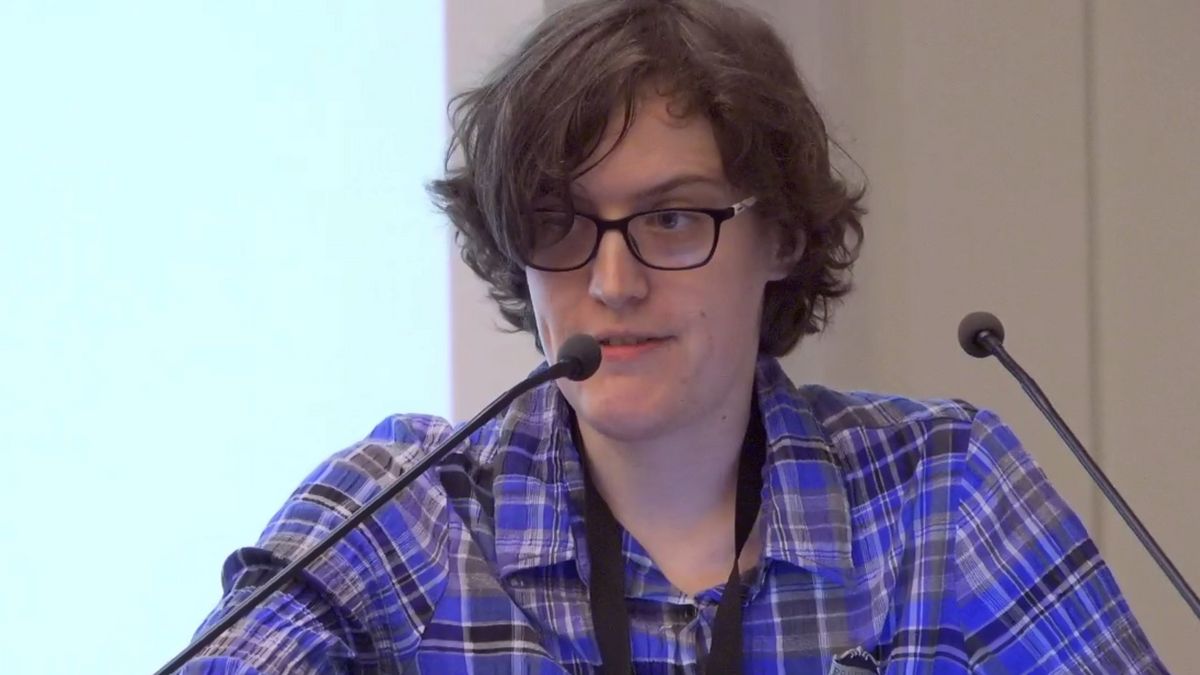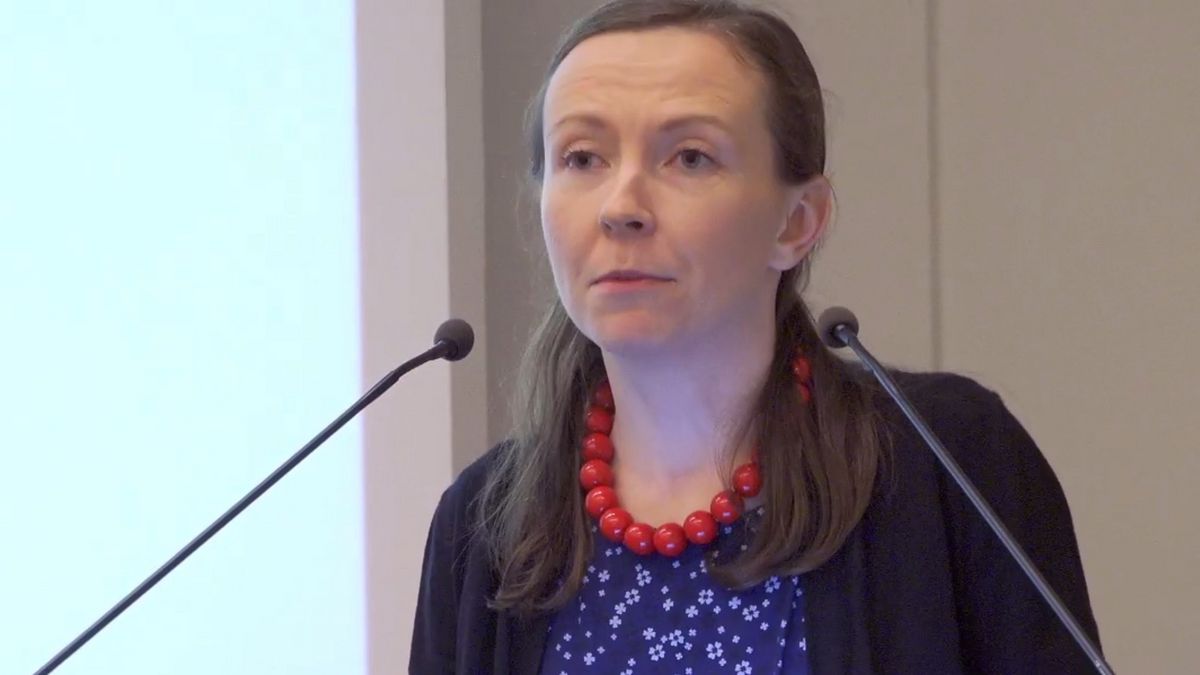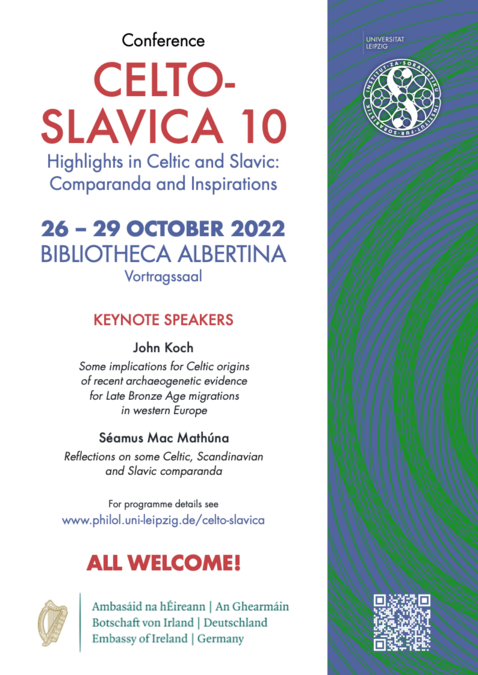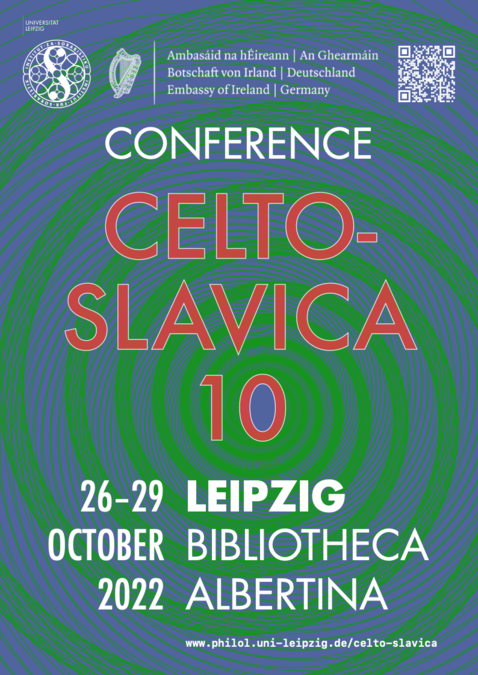Vom 26. bis 29. Oktober fand die Celto-Slavica 10 in Leipzig statt.
Danksagung
Die Konferenz war ein großer Erfolg. Das Institut für Sorabistik der Universität Leipzig sowie das Forschungsteam Minderheiten- und keltische Sprachen der Universität Szczecin bedanken sich ganz herzlich bei allen Teilnehmenden – vor Ort und online. Wir zählten knapp 80 Teilnehmende. Wichtig war der soziale Aspekt der Tagung, ergänzt durch Ceílí, Dinner und Lautarchiv Berlin.
Wir bedanken uns für die Unterstützung und Zusammenarbeit bei Dr. Maxim Fomin (Sekretär der Celto-Slavica und Forschungsdirektor der Universität Ulster), dem Institut für Slavistik Leipzig, der Botschaft Irlands, CnaG Bherlín, der Domowina, bei unseren Sessionmusikern, Matthias Schlegel, Lena Krochmann, Emma de Paor und Amanda Lisjak sowie den Doktorandinnen und Doktoranden des Instituts für Sorabistik.
Informationen zur Post-Konferenzpublikation folgen demnächst.
Impressionen
Programm / programme Celto-Slavica 10
Unser Céilí / Cèilidh eröffnet mit Musik und Tanz die Celto-Slavica 10. Jeder ist herzlich willkommen.
- Mittwoch, den 26.10. um 18:00 Uhr
- Dhillons (Reichsstraße 18)
We will open Celto-Slavica 10 with a céilí / cèilidh. All are welcome to join us for an evening of music and dance.
- Wednesday, 26/10 at 6 p.m.
- Dhillons (Reichsstraße 18)
Dhillons Irish Pub, Reichsstraße 18, 04109 Leipzig
Ablaufplan / Schedule
Laden Sie sich hier den Ablaufplan herunter:
Download the schedule here:
Celto-Slavica 10 Schedule
[update 26/10/22]
Konferenzort / Conference venue
Bibliotheca Albertina, Vortragssaal, Beethovenstraße 6, 04107 Leipzig
Unser Konferenz-Dinner findet nach den Vorträgen statt, d. h. am Abend des 28. Oktober im Restaurant Apels Garten, das nicht weit vom Konferenzort entfernt und auch kulturell sehr interessant ist.
Bitte bei Lena Krochmann melden, ob Sie teilnehmen werden und welches Menü Sie wählen (vegetarisch oder mit Fleisch, siehe unten). Während das Essen für Sie kostenlos ist, müssen die Getränke bezahlt werden.
Our Conference Dinner will take place after our sessions, i.e. in the evening of the 28th of October in Apels Garten, an area which is close to the conference venue and culturally very intersting.
Please register with Lena Krochmann, in case you want to participate. Please choose the meal (meat or vegetarian, see below) and inform Lena Krochmann about your choice.
Whereas the meal is free, drinks need to be paid.
Menüs / meals
Mit Fleisch / with meat
Karotten-Ingwersüppchen, Baguette
***
Frischlingsbraten in Waldpilzsauce
mit Apfelrotkohl und hausgemachten Kartoffelklößen
***
Eisteller „Apels Garten“
- 3 Sorten Eis mit Früchten garniert -
Vegetarisch / vegetarian
Karotten-Ingwersüppchen, Baguette
***
In Butter gebratene Zucchinischnitzel
mit mediterranem Gemüse und Kräuterrisotto
***
Eisteller „Apels Garten“
- 3 Sorten Eis mit Früchten garniert -
Restaurant Apels Garten, Kolonnadenstraße 2, 04109 Leipzig
Am 29. Oktober werden wir das Lautarchiv Berlin besuchen, wo man Aufnahmen u. a. von keltischen Sprachen hören kann und vom Sorbischen wie es am Anfang des vergangenen Jahrhundert gesprochen wurde. Hoffentlich gibt es dort auch begleitende „Personalbögen“ (siehe auch: Heinz, Sabine, Hrsg. Die Deutsche Keltologie und ihre Berliner Gelehrten bis 1945. Berlin: Peter Lang Verlag, 1999.), die die Transkription, sozialen Hintergrund der Sprecherin / des Sprechers, Literatur usw. zeigen.
Die Exkursion beginnt 8:00 Uhr in der Beethovenstr. 6, Leipzig (vor dem Konferenzort) mit dem Bus, der Sie auch wieder zurückbringt.
Bitte melden Sie sich bei Lena Krochmann an, da die Plätze begrenzt sind.
On the 29th of October we will visit the sound archives in Berlin, where we can listen to recordings of Celtic languages and Sorbian as spoken at the beginning of the previous century. There will hopefully also be accompanying "personal sheets" (see also here: Heinz, Sabine, editor. Die Deutsche Keltologie und ihre Berliner Gelehrten bis 1945. Berlin, Germany: Peter Lang Verlag, 1999.), which may display transcription, social background of the speakers, literature etc.
The trip starts at 8.00 a.m. in Beethovenstr. 6, Leipzig (outside the conference venue) by bus, which will also bring you back.
Please register with Lena Krochmann.
Berlin, Portal I des Humboldt Forums
Abstracts
Sylwester Jaworski & Michał Baran
A comparison of the acoustic features of the affricated Welsh /t/ and the Polish affricate /ts/
This paper presents the results of a study that examines the acoustic features of the affricated allophone of the Welsh plosive /t/ and compares them to those of the Polish dental affricate /ts/. The authors analysed numerous tokens of the sounds produced in word-initial and word-final position and measured their physical properties, including the centre of gravity, dispersion, skewness and kurtosis. The obtained results revealed significant differences between the Welsh and Polish sounds, which seem to be due to the presence of aspiration in the former.
Aleksandra Mandić
Celtic in the Sorbian children's magazine Płomjo from 1990 to 2020
This paper is a study of Celto-Slavic connections on the example of the magazine Płomjo. The magazine Płomjo appeared in 1952 as a magazine for Sorbian children. That is the first magazine after the Second World War printed for Sorbian children from 7 to 14 years old. It was published twice a month by the FDJ (Free German Youth) in Dresden. A visible content change in the magazine occurred in the 90s of the twentieth century, when Beno Budar became the editor of magazine. We used magazines from 1990 to 2020 for our research. In these numbers, we noticed several articles about the Celts and Celtic languages, especially the Irish and the Welsh, as well as the Irish, Welsh and Breton languages. In the articles, the authors who wrote them made a comparison between the Sorbs and the Celts. The comparison focusses on the level of the language, the number of speakers, and other similarities at the level of culture, religion and tradition. The comparison is very justified, but often it has the function of better showing to readers a distant and perhaps unknown culture and language.
References
František, Vydra. „Kak pytachmoj za pokładom“. Płomjo, 10/ 1999: 8-9.
F.V. „Kelko rěčow so rěči na swěće?“. Płomjo, 8/ 1990: 18.
Kral, Gert. „Irska kraj dźěći a młodostnych“. Płomjo, 5/ 2008: 14-17.
Papazoglu, Fanula. Srednjobalkanska plemena u predrimsko doba (Iribali, Autarijati, Dardanci, Skordisci i Mezi). Sarajevo: Akademija nauka i umetnosti Bosne i Hercegovine, 1969.
Vasiljevič Sedov, Valentin. Sloveni u dalekoj prošlosti. Prevod Draginja Ramadanski, Milica Spasić, Nenad Spasić. Novi Sad: Akademska knjiga, 2012.
Šatava, Leoš. „Kraj čerwjeneho zmija“. Płomje, 6-7/ 1996: 42-46.
Šatava, Leoš. „Na smaragdowej kupje“. Płomjo, 6-7/ 1997: 57-58.
Šatava, Leoš. „Dudaki, mužace suknje a potwora“. Płomjo, 9/ 1997: 20-21.
Séamus Mac Mathúna, Ulster University
Cultural contacts and comparanda between Celtic, Old Norse, Slavic and Gothic in the Classical Era and Early to High Middle Ages
This talk will focus on the Scandinavian background to the early history of Kievan Rus and on Celtic, Slavic and Scandinavian comparanda in some cultural, religious and literary domains. As this is the Tenth International Colloquium of the Societas and the sixteenth year since its foundation in 2004, I will preface the talk with a few comments on its history and on some other parallels between the cultures which have been investigated by scholars at earlier colloquia.
Irena Kurzová
Defining the narrative model of Y Tair Rhamant
This talk presents the results of a narratological characterization of the three Middle Welsh prose texts referred traditionally as “the three romances” (Y Tair Rhamant): Peredur, Owein, and Gereint..
Methodically, the analysis is based on the narratological theory of Cesare Segre (1928-2014), the leading figure of Italian literary semiotics. Segre formulated his approach to the narrative analysis of a literary text in the mid 1970s. His book appeared in a translation into English in 1979 as, “Structures and Time: Narration, Poetry, Models”. Segre’s theory combines in a fruitful way philology and semiotics. Italian literary semiotics explicitly adopts the heritage of Prague structuralism and Jakobson as its linguistic basis. Segre’s narratological theory is an elaboration of the stimuli of Russian formalism. Segre replaces the dichotomy “syuzhet – fabula” (plot – story) with the quadripartition “discourse - plot – story – narrative model” where the term “discourse” means that the text is analysed from the point of view of the language, rhetorical devices etc. “Narrative model” is the most general way a text can be analysed; in other words, “narrative model” can be understood as a reduction of a “story” to a pure functionality. It is important to underscore that Segre’s descriptive quadripartition is not detached from the cultural context; Segre emphasizes that “a semiotic model is a historical model”.
Segre underlines the importance of a comparative approach and the necessity to base a literary research on an analysis of a corpus. The narratological analysis of Middle Welsh textual triad Y Tair Rhamant aims to define the “narrative model” of this triad. The analysis takes into account the research in the field of Celtic studies dedicated to these texts. The combination of Segre’s narratology (which develops the stimuli of Slavic structuralism and semiotics) with the results of Celtic studies seems to be very fruitful.
Selected Bibliography
Bendinelli-Predelli, Maria: Early Cyclical Narrative: The Biographical Romans of Peredur and Lanzelet, in: Besamusca, Bart et al. (Eds.): Cyclification: The Development of Narrative Cycles in the Chansons de Geste and the Arthurian Romances, 1994, pp. 195-197
Bromwich, Rachel et al. (Eds.): The Arthur of the Welsh, Cardiff 1991
Edel, Doris: The insular-Celtic narrative tradition between orality and literacy, in: Edel, Doris, The Celtic West and Europe: studies in Celtic literature and the early Irish Church, Dublin, 2001, pp. 177-196
Lloyd-Morgan, Ceridwen: Narrative Structure in Peredur, in: Zeitschrift für celtische Philologie, 38, 1981, pp. 187-231
Lloyd-Morgan, Ceridwen: Medieval Welsh Tales or Romances? Problems of Genre and Terminology, in: Cambrian Medieval Celtic Studies, 47, 2004, pp. 41-58
Emma de Paor
Dindshenchas agus logainmneacha na hÉireann – An introduction to the genre of placename stories and placenames of Ireland
Placenames in Ireland are not only important in a geographical context but also hold a deep cultural significance. Many Irish placenames liken prominent natural features to parts of the body, using terms such as ceann ‘head’, droim ‘back’, and béal ‘mouth’, while others reflect the man-made structures of the landscape, for example, cill ‘church’, dún ‘ringfort’, and mainistir ‘monastery’. Ireland has been described as one of the most densely named countries in Europe, (Mac Giolla Easpaig, 2008) and although extensive work has been done in the mapping of the country, many placenames owe their survival to local knowledge and written sources. Arguably the most important written source for placenames is collectively known as dindshenchas or ‘place lore’. This was presented in the form of either prose or verse and assembled mainly in the eleventh and twelfth centuries, before the coming of the Normans, who introduced the use of the word baile ‘town’ which is now an integral part of Irish placenames (Ó Murchadha & Murray, 2000). This paper will introduce the genre of placename lore in Ireland, with a focus on particular examples, and illustrate the importance of this historical literary genre in a modern context.
References
Mac Giolla Easpaig, D. (2008). Placenames Policy and its Implementation. In A new view of the Irish language (pp. 164-177).
Ó Murchadha, D. & Murray, K. (2000). Place-names. In The Heritage of Ireland (pp. 146-155). The Collins Press.
Yéléna Topalov
From minority language to scholar language : the role of bilingual education in the frame of language revitalization. The case of Breton, Occitan and Upper-sorbian
In Europe, a lot of minority languages quickly ceased to be transmitted through generations this last century, causing a quick disappearance of the languages in public society, in everyday life circles as well as a family language. Only starting the 19th century, at the wake of nationalism throughout the continent didn’t we start seeing the wake of soon-to-be lost languages’ activists’ campaign for the survival of their language.
In France, minority languages have always been left on the side by the central government, especially since French became the cement for the nation state and newly created school system at the end of the 19th century, while also inflicting centuries of mistreatment to the speakers of minority languages. For a long time, they were deemed uncultured because of the language or dialect they spoke, namely because these languages and dialects weren’t “real” languages, merely an idiom with no stable orthography nor grammar rules, and whose lexicon changes from town to town, enhancing the feeling of not being a “real” language, even for the speakers themselves.
In Germany, the case of the Sorbian people up until today should be analyzed historically through the prism of relations between the German states and the Slavic people inhabiting the regions since centuries, when it’s not about wars which reduced the number of speakers. Still, the Sorbs have always been subjected to more or less strong political anti-slavism depending on the leaders at different times. Inside the community itself there are also different religions, (sister) languages and so leading to an heterogenous identity of what is called today the Sorbian people.
There is something in common between Occitan, Upper-Sorbian and Breton : they are also considered regional languages and they have no “referent nation state” as would the speakers of Danish in Germany or the speakers of Arabic in France have. Today, these minority languages are only learnt through school, and the few remaining older speakers are rare to be found and not able to provide the younger generation their knowledge for various reasons. In this case, we might ask ourselves: how can school play a role in re-establishing a language in the public space, with children whose native language is mainly French?
The challenge for bilingual schools with a course in minority language is to be able to bring the language into a scholar frame, with a vocabulary and a codified grammar that can be used and understood by the speakers, and so reduce the gap between the “new” language in school -considered as a “real” language- and the “traditional” language spoken by elders, mainly from rural areas, viewed as a “patois”.
This study aims to understand the pedagogies used by teachers of non-linguistic disciplines at a secondary school level, such as geography, mathematics, biology, and see how it is constructed then pass this knowledge onto the students. Namely, the secondary school is a place where the language isn’t only a target, but also becomes a metalanguage in which pupils must be able to express themselves. In the meantime, the training course of teachers, their personal and professional experience, as well as their teaching methods will be analyzed. A part of the study will be dedicated to the analysis of school books and dictionaries to understand today’s challenges of school book publishing in minority languages. Lastly, the study will analyze the sociolinguistical and political situation of each language in their country from a wider frame.
Matteo Colombi
Irish culture goes Czech: general remarks and some mysticism
The topic of my talk is the reception of Irish culture in Czech culture. I will first give a short overview on this subject basing on the results of the scientific publication Ireland and the Czech Lands (2014) that informs among others on the research activities of the Centre for Irish Studies at Charles University in Prague. I will afterwards focus on a specific (and clue) period of the reception of Irish culture in the Czech area, that is the 19th century: Two canonic Czech author of this epoch, Karel Havlíček Borovský (1821-1856) and Julius Zeyer (1841-1901), deal with Irish culture in a part of their work and are both representative of two possible ways of approaching Ireland in 19th century Czech culture – the political perspective (Havlíček Borovský) and the spiritual one (Zeyer).
Zeyer’s spiritual approach to Irish culture shall be at the very core of my reflections which will be devoted to his rewritings of the Irish immram tradition in both texts Kronika o svatém Brandanu (Chronicle on St. Brendan, 1884) and Maeldunova výprava (Máel Dúin’s expedition, 1896). Zeyer can be considered as one of those cosmopolitan European early modernist authors (symbolists, aestheticists etc.) who before and around 1900 feel in a late romantic way strongly attracted by folklore, medieval national, European as well as non-European mythologies: Zeyer’s interest in the spiritual content of the lore of Irish and other cultures has to be understood as a conscious reaction to the materialism of modern life, yet Zeyer is not a ‘real’ romantic author anymore and does not seem to believe that myths have the effective power to change society; according to him, they are rather a way to individually mourn for a mystic sensibility passed away, for a more transcendent view of the world of which the immanentism of modernity is not capable anymore. A significant feature of this attitude is a strong aestheticization of the Irish immram’s tradition, for Zeyer is interested not only in the content of Irish medieval spirituality but also in the representation of “the beautiful shape” of this spirituality according to the aesthetic canon of the end of the 19th century. Zeyer’s approach to spirituality and myths in general is in my opinion quite typical for the early modernism from the fin de siècle: My interest as a non-Celtic scholar and hobby Irish learner is therefore to ask the experts in the audience if Zeyer’s reception of Irish medieval culture can be compared with the reception of this culture by other European literary authors (and artists in general) from the same period.
Bibliography
Mánek, Bohuslav. “Irská témata v díle Julia Zeyera”. In: Kudrnáč, Jiří and others (eds.). Julius Zeyer, lumírovský básník v duchovním dění Evropy. Brno: Host. 2009. 333-342.
Mánek, Bohuslav. “The Czech Reception of Irish Poetry and Prose, c. 1790-2013”. In: Power; Pilný. Ireland and the Czech Lands. 153-174.
Power, Gerald; Pilný, Ondřej (eds.). Ireland and the Czech Lands. Oxford and others: Peter Lang. 2014.
Zeyer, Julius. Kronika o svatém Brandanu. In: Spisy Julia Zeyera. Vol. 11. Praha: Česká grafická akciová společnost Unie. 1906.
Zeyer, Julius. „Maeldunova výprava“. In: Maeldunova výprava a jiné povídky. In: Spisy Julia Zeyera. Vol. 29. Praha: Česká grafická akciová společnost Unie. 1906. 1-70.
Tatyana A. Mikhailova
Modern Irish gadaí ‘a thief’ and Old Irish gataid ‘steals’: towards its etymology and semantic development (with addition of some typological Slavonic parallels)
The general etymological theory recognizes that words of a language originate from a limited number of basic stems containing in potentia a wide complex of ideas. Although regular sound changes constitute the most important form of language change, semantic changes, not so regular, represent an important part of the etymology. A theory of recursive semantic shifts could serve as a test of reconstruction.
The work concerns itself with studying the way the notions thief and theft, which are considering to be rather late and secondary, are realized in Celtic languages in diachronic perspective. The reconstruction of the original four-component model of the contemporary notion theft is given, based on comparative material. The development of the original notion is based on:
1. a secret action
2. deprivation
3. harm
4. agence’s personal interest.
Those notions prove to be basic for the emergence and development of corresponding terms during linguistic and social evolution. At the same time, the work provides comparative analysis of the Slavonic тать and Old Irish taid going back to the same Indo-European stem whose original meaning is “a secret action” (it is also stated in some other Indo-European stems having similar derivation). The work suggests the existence of multi-directed semantic transition: not only “secret” – “thief”, but also the reverse “thief” – “secret”. The work also suggests a new etymology for the main verb for stealing in Modern Irish – goid, based on early uses of the verb meaning “distancing” and later – “deprivation”:
Cf. (Wb. 9c8) - ní gati eronn ón ‘thou dost not take it from us’ (1 and 4 - Ø)
In tan ba mithig a gait de chígh… [Bethi Brigte, Ó hAodha 1978: 5, 34] - ‘When it was time to wean her’ (to deprive from the breast) (1, 3, 4 - Ø).
The verb of stealing as well the term for thief can not be reconstructed on the IE level because of the fact that the universal idea of private property could be rather late. Each language develops its own system of words describing the process of ‘stealing’, basing on the mode of the action, its motivation or its goal and target.
In modern Irish basic verb of stealing is goid (having also a meaning ‘take away, remove’) from OI gataid. The projection of modern meaning of the verb could serve as a false help for its etymology. So, in the “Dictionary of Selected Synonyms in the Principal Indo-European Languages” by C. Buck (1949) OI verb is connected with Lith. godas ‘avarice’ and the idea of stealing derives from the cause of the process. In IEW (1959: 413) OI derives from IE *ĝhasto-, *ĝhazdho- ‘Rute, Stange’ (see OI gat ‘withe’, but Lat. hastam ‘spear’, Goth. gazds ‘peak’), so stealing is described as a general harm (cf. analogical semantic development of Russian vor and Cz. and Pol. sloděj ‘thief’).
R. Matasović in the “Etymological Dictionary of OC” (2009: 155) proposes a new etymology of OI gataid supposing its derivation from IE *ghosti- ‘host, guest’. The semantic shift should be: alien – alienation – deprivation – stealing (but not as he presumes: host – enemy – thief). In my paper I suppose to support this etymology by:
1. the analysis of Early Irish examples of the use of the verb (especially in the language of the Glosses);
2. the comparison with analogical semantic shift in Latin (alienare ‘to deprive’) and some Slavonic development of the root *tjudj’ (early Gothic borrowing, cf. Þiuda ‘nation, people’): OCz. otcuziti ‘to take away, to steal’.
OI táid ‘thief’ it’s use and its genetic and semantic parallels in Slavonic (Sln. tât m., Gsg. tâta, Gsg. tata, Russ tat’) also will be analyzed.
The paper is supported by the Foundation RSCF, project # 22-18-00586
Elisa Braun
phōnē – a network for regional and minority languages in European theatre
phōnē – Giving Minority Languages a Voice promotes and safeguards cultural and linguistic diversity in Europe. The project connects people who belong to a language minority across language and cultural borders. phōnē makes an active contribution to the vitalisation of vulnerable RMLs and will give them a voice, a stage and a platform for exchange. Endangered languages as well as their theatres must succeed in transmitting their culture / language to future generations. Young people, whose RML roots are not yet firmly established, are therefore the main target group. Together with RML speakers from their parents' or grandparents' generation, they will develop creative forms of expression under the leitmotif of Tradition in Modernity to tell stories about their communities. All artistic work is for, with and about the communities. Common learning of methods of biographical/documentary writing and intergenerational community theatre on a European level will lead to 8 contemporary theatre plays and professional productions. Intergenerational community theatre productions will open up new formats, places (site specific) and digital medias (podcasts / vodcasts). Joint co-creations will be developed at international festivals and citizens from all involved 8 communities will develop a multilingual theatre event. It is the declared aim of phōnē to establish a network for RML theatres that has been missing for a long time. phōnē’s legacy is be:part, a hybrid handbook (toolkit) of proven working methods and best practices examples for minority language theatre.
Lena Krochmann
Political terminology on Scottish Gaelic radio news – A closer look at an episode of Aithris na Maidne
Political terminology in Scottish Gaelic has undergone increased development with the emergence and expansion of Scottish Gaelic broadcast media and provisions for the language in political institutions. However, as with Scottish Gaelic terminology in general, there is very little standardisation and co-ordinated planning. As the only dedicated Scottish Gaelic broadcast media, BBC Radio nan Gàidheal and the television channel BBC Alba are among the most important contexts for the discussion of politics in Scottish Gaelic, as well as for the use of terminology in general. This, along with their good reach within the Gaelic-speaking community, makes them extremely relevant for terminology dissemination. Broadcasters have long been involved in the creation, development and selection of Scottish Gaelic terminology (e.g. Lamb, 1999; MacLennan 2003). While the Scottish Gaelic broadcast media are generally highly appreciated by the language community (BBC Trust, 2016), research has shown that some speakers find the new Scottish Gaelic vocabulary used by the BBC difficult to understand (Bell et al., 2014). Formal or specialised Scottish Gaelic is sometimes perceived as unnatural by speakers, partly due to the use of neologisms and the avoidance of English loans and code-switching (e.g. McEwan-Fujita, 2008; Smith-Christmas & Ó hIfearnáin, 2015).
To illustrate how political terminology is used on Scottish Gaelic broadcast news today, this paper takes a closer look at an episode of Aithris na Maidne, a current affairs programme broadcast regularly on BBC Radio nan Gàidheal. The primary focus is on the use of Gaelic-based neologisms compared to borrowing from and code-switching to English. The observations are used to discuss research and commentary on Scottish Gaelic in the media as well as Scottish Gaelic official and political terminology in general, and can be compared to the situation of other minority languages.
References
BBC Trust (2016). BBC Trust service review: BBC nations’ news and radio services. http://downloads.bbc.co.uk/bbctrust/assets/files/pdf/our_work/nations_radio_news/nations_service_review.pdf (accessed 30/01/2022)
Bell, S., McConville, M., McLeod, W. & Ó Maolalaigh, R. (2014). Dlùth is inneach – final project report. Linguistic and institutional foundations for Gaelic corpus planning. Soillse. https://www.gaidhlig.scot/wp-content/uploads/2016/12/%C3%93-Maolalaigh-et-al.-2014-Planadh-corpais-CR12-03-Corpus-planning.pdf (accessed 22/06/2021)
Lamb W. (1999). A diachronic account of Gaelic news-speak: the development and expansion of a register. Scottish Gaelic Studies, 19, 141-171.
MacLennan, I. (2003). BBC Craoladh nan Gàidheal: Co sinn?. In J. M. Kirk & D. P. Ó Baoill (Eds.), Towards our goals in broadcasting, the press, the performing arts and the economy: Minority languages in Northern Ireland, the Republic of Ireland, and Scotland (pp. 67-72). Cló Ollscoil na Banríona.
McEwan-Fujita, E. (2008). Working at “9 to 5” Gaelic. Speakers, context, and ideologies of an emerging minority language register. In K. A. King, N. Schilling-Estes, L. Fogle, J. J. Lou & B. Soukup (Eds.), Sustaining linguistic diversity: Endangered and minority languages and language varieties (pp. 81-93). Georgetown University Press.
Smith-Christmas, C. & Ó hIfearnáin, T. (2015). Gaelic Scotland and Ireland. Issues of class and diglossia in an evolving social landscape. In D. Smakman & P. Heinrich (Eds.), Globalising sociolinguistics. Challenging and expanding theory (pp. 256-269). Routledge.
Zuzanna Grala
Reasonable language management - criticism of selected Celtic and Slavic minority language legislation
Language management of European minority languages is often based on international legislation. It is assumed, that the rights of a linguistic minority can be protected in a better way when they are regulated by an "outsider", perceived to be objective and impartial.
Unfortunately, there are two main issues when it comes to international policing and its support of minority languages. As every country and region has a different linguistic situation and system of organization, it is impossible to provide one-fits-all instruction when it comes to language policies. As a result, imposed policies are deemed to be rather general in their prescriptions, and vague when it comes to the actual recommendations and wording. This paper aims to recognize such tendencies when it comes to language management legislation and to point out how the lacking aspects of language management policies affect Celtic and Slavic minority languages and speakers.
The basis for this assessment is the European Charter for Regional and Minority Languages (ECRML). Published by the Council of Europe in 1992, it is one of the main documents which regulate the rights of minority languages in the European Union. ECRML has been ratified by both the United Kingdom and Poland, and therefore its objectives apply to Irish, Welsh, and Kashubian alike. The comparison of different applications of one document provides an insight into some drawbacks of relying on international legislation. While ECRML explicitly involves measures aimed at promotion and not just protection of minority languages, it also provides examples of the issues of vagueness and generalization. In this paper, those examples of problematic aspects within the document and the process of its ratification are analysed in a broader context of modern language management, including regional or national legislation.
Jenny Beutelmann
The aisling tradition in the works of William Butler Yeats
In this presentation, I will introduce the aisling tradition of Irish literature, its roots in Irish mythology and how it is employed in two of William Butler Yeats’s works: the poem The Song of Wandering Aengus, published in 1899 in The Wind Among the Reeds; and the play Cathleen ni Houlihan, written by Yeats and Lady Gregory and first performed in 1902.
I want to discuss the following questions:
1. What is the original message of the aisling tradition?
2. Does Yeats apply the same message in his works, or does he give it a new one?
3. For open discussion: does an equivalent to the aisling exist in non-Irish literary traditions and is it still relevant today?
As a student from a different field, I may not be an expert in the topic (yet). However, I find it very interesting, and I think about including it in my upcoming master’s thesis. Therefore, I look forward to discussing it and get an idea how I could further explore the topic.
Marina Shatunova
The language of the pandemic
2020 brought us the global challenge nobody knew how to deal with, and with it a number of changes in the way we act, socialize, travel and communicate. The reality shaped by the rapidly spreading pandemic called for new words. Leaflets, instructions, plaques above toilet sinks — hundreds and hundreds of notices sprang up like mushrooms after the rain. What language would they be in? What words would be used?
In countries with one official language the answer is fairly simple but it becomes vaguer the moment we turn to multilingual countries and communities, especially those with a minority language. Ireland is one of them.
Bilingual by the law, the country is now predominantly English-speaking, and while in the country's constitution (Bunreacht na hÉireann: 8-9) the Irish language comes first, in real life it is mainly used by the Gaeltacht residents, school pupils and language enthusiasts. Indeed, according to the 2016 Census data, only 73803 people, or 1.7% of the total population of Ireland, spoke Irish daily outside class as opposed to 77185 people 5 years earlier (Central Statistics Office). The next census is due in April this year, and it is unlikely that the number of daily speakers increases.
What does it mean for the pandemic linguistic landscape? Will all the necessary information be provided in both English and Irish, or will the Irish speakers be obliged to turn to English? More importantly, what language would the speakers themselves use when talking about pandemic? Those questions were the starting point of my research.
For this paper I will be looking at Irish leaflets and notices concerning COVID-19 published online and offline. The idea is to see whether Irish and English are equally used to talk about the pandemic and whether there is any difference in the pandemic linguistic landscape and language use between the Gaeltacht and the rest of Ireland. The material will be sourced on the internet (Twitter and Instagram hashtags, official accounts of government of bodies) and in the field enlisting the help of volunteers living in Ireland. Time permitting, a comparison between Ireland and Russia will also be made.
References
Bunreacht na hÉireann. Constitution of Ireland. Dublin: The Stationery Office, 2013. Central Statistics Office. Online resource: https://www.cso.ie/en/csolatestnews/pressreleases/2017pressreleases/pressstatementcensus2016resultsprofile10-educationskillsandtheirishlanguage/. Accessed 31/01/2022.
Stephanie Bradley
The Otherworldly female within the owl motif
This paper explores feminine imagery preserved within the Fourth Branch of the Mabinogi through associations in Irish and Polish folklore with the owl, grief and death. Folklorist dr hab. prof. Marzena Marczewska, confirmed that the “owl is associated with death in Polish folk culture” giving as an example the proverb:
“Sowa na dachu kwili, komuś umrzeć po chwili”
“The owl on the roof is crying, someone will die after a while.“
She added “that the owl is also connected with the Strzyga or female demon”. (personal communication 2020)
In a recently submitted dissertation to UWTSD I argued that Blodeuwedd, the flower maiden transformed into an owl in Math of Mathonwy, might be a remnant of the Otherworldly female found in Irish immrama and echtra and in the medieval Welsh tales collected in ‘The Mabinogion’. I asked why she, the enchantress, or Celtic psychopomp is so feared. My research pointed towards the aspect of the Otherworldly female as messenger of death. Parallels were found between the tale of Blodeuwedd and the ban síde of the Irish folkloric tradition as discussed by Patricia Lysaght, Tomos Ó Cathasaigh, and in Mary McLaughlin’s PhD thesis (2019) on keening women in Ireland.
Though the fourth branch tale confers shame on Blodeuwedd, I suggest this was medieval gloss and that what lay beneath was a fear of the power of the Otherworldly female to foretell death. Though European hypotheses about matrilineal goddess worship put forward by archaeologist Marija Gimbutas are not universally accepted, in this paper I follow Beata Walęciuk-Dejneka (2018) in recognising the value of examining motifs through Gimbutas’ arguments, and compare the Celtic association of a birdlike female as prophetess of death with that of Slavic folklore. Whereas Joanna Szerszunowicz (2003) made a comparative study of the owl in German, Polish, Italian and English culture and language, this paper adds to the discussion by referring to Walęciuk-Dejneka’s work on the ‘otherness’ of the female bestowed on it by cultural narratives that exclude feminine power (2018) and considers how fear of death may be beneath negative associations with birdlike female figures.
Corinna Salomon
Thermoluminescence dating of the pot with inscription PD·2 artebuθzbroχθui from Ptuj
In 1994, Eichner, Istenič and Lovenjak published an inscription on a small ceramic pot from one of the western Roman necropoleis of Ptuj (ancient Poetovio). The inscription (Lexicon Leponticum PD·2) was analysed by Eichner as encoding a Celtic bipartite name or phrase artebuθz broχθui ‘Artebuds (son) of Brogduos’ or ‘Artebuds for Brogdos’. Eichner’s reading remains unchallenged, even though there are a number of problems which he himself pointed out:
- The interpretation of the text as two Celtic names is feasible, but though all the onomastic elements find possible comparanda, neither name is otherwise attested. In artebuθz, the composition vowel -e- and the absence of the stem vowel are irregular; in broχθui, the meaning/function of the dental element is unclear. If the reading is correct, the inscription provides notably late evidence for Celtic inflectional morphology and a productive patronymic system in Romanised Noricum/Pannonia.
- The alphabet used in the inscription shows a combination of letter forms and orthographic features which is not known from any other alphabet in Northern Italy (or anywhere else). Eichner’s reading must presume that the letters are used according to various orthographies (chi used as in North Italic, theta as in Lepontic, zeta as in Etruscan, beta as in Latin), and the letter forms (North Italic rho, archaic Greek and Italic upsilon, Etruscan tau, capital Latin epsilon, cursive Latin alpha) are equally eclectic. Eichner assumes that we are dealing with a local alphabet which was formed around the middle of the 1st millennium BC and is attested only in this single late Latinised inscription, which is the solitary witness of an independent, possibly Celtic, script province in the Eastern Alps. Still, it is, as Eichner also concedes, very surprising to find Old/North Italic letter forms in the Roman Imperial age, as the vernacular writing traditions of Northern Italy came to and end in the late 1st century BC.
The pot (Universalmuseum Joanneum Graz, inv. no. 8202) is dated to the 2nd–3rd century AD based on a ceramic Roman oil lamp which was found in the same grave (Eichner et al. 1994, 132; Istenič 2000, 179) – the pot itself fits in with the provincial Roman pottery of Poetovio (Istenič 1999, 143), but is too general in shape to be dated typologically. Since the pot is part of a number of archaeological finds which were excavated in the 1880s under the supervision of the Museum Joanneum by a local farmer who appears to have sometimes disarranged find contexts, it was deemed worthwhile by Prof. David Stifter (Maynooth) in collaboration with the Austrian Academy of Sciences project Cisalpine Celtic Language and Literacy to have the pot dated by thermoluminescence analysis to see whether it is a little older than its uncertain context, and closer to the time from which we may reasonably expect a Latinised North Italic/Palaeo-European inscription. The material of the pot was analysed in October/November 2020 by the thermoluminescence team of the Atominstitut of the Technische Universität Wien under DI Robert Bergmann, and the results show that it was fired considerably later than both archaeological context and inscription suggest, viz. in the 7th–9th century AD.
This result raises methodological questions concerning the implementation of scientific dating methods in archaeology. How do we deal with results which appear to challenge traditional chronologies? In the present case, the two datings are irreconcilable. No further calibration of the thermoluminescence analysis (e.g. factoring in soil radiation at Ptuj or the time the object was kept in a museum repository) would change the result so significantly that a Roman-age dating would be remotely possible. The chronology of Roman culture in Poetovio is of course equally beyond doubt.
The paper will present the epigraphic find and its problems in detail, and discuss methodological issues and possible solutions for the incongruous datings of inscription, object and material.
References
Heiner Eichner, Janka Istenič, Milan Lovenjak, ‘Ein römerzeitliches Keramikgefäß aus Ptuj (Pettau, Poetovio) in Slowenien mit Inschrift in unbekanntem Alphabet und epichorischer (vermutlich keltischer) Sprache’, Arheološki vestnik 45 (1994), 131–142.
Janka Istenič, Poetovio, zahodna grobišča. Grobne celote iz Deželnega Muzeja Joanneuma v Gradcu (Ljubljana: Narodni Muzej Slovenije 1999–2000).
David Stifter, Martin Braun, Corinna Salomon, Michela Vignoli et al. (ed.), Lexicon Leponticum. URL: www.univie.ac.at/lexlep (3.1.2021)
Jadranka Gvozdanović & Václav Blažek
*trei̯- as the intensifying prefix in South Slavic and Celtic
1. In Modern Serbian there are two sets of compounds with the first component identified as „three“, bearing the augmentative or intensifying function (see Vučković 2021).
1.1. The first set is characteristic for the high, predominantly religous style and can be traced to the influence of (Old) Church Slavonic, where it was probably adapted from Greek: Serbian trivelik, Serbian Church Slavonic trьvelikь, vs. Greek τρισμέγιστος, i.e. „thrice-greatest“ (Nicet. Eug. 5.280; used also as a late name of Hermes).
Serbian trìsvetī & trosvet „thrice holy, most holy“, Serbian Church Slavonic trьsvetь & trisvetь „thrice holy“ vs. Greek τρισάγιος, i.e. „thrice-holy“ (Eccl.).
1.2. The second set can be identified in some rather expressive terms of the vernacular Serbian speech:
tročel m. „a man with a high forehead“
troguz m. „a man with an ample bottom, with large buttocks“
tròkur adj. m. „having a large sexual organ; being extremely capable of sexual love“
trògubica f. „a male or female person with very thick or swollen lips“
trokučka f. „wicked, mouthy woman“ vs. kȕčka f. „a female dog, a bitch“, figurative, pejorative „a wicked, evil woman; an immoral person, a person of no integrity in general“ (see Vučković 2021, 282-86).
2. There are remarkable parallels in the Insular Celtic languages:
Old Irish trederc „keen eyed“, treglas „very grey“, trelíath „very grey“, treoll „very great“ (DIL T-288, 290, 294, 298)
Old Welsh trybann „limit“, Middle Welsh tryfan = intensive try- + bann „top, tip“
Old Welsh trylenn „protection, refuge“, adj. „much loved“, Middle Welsh trylenn, where the second component corresponds to Old Welsh lenn „curtain, veil“ or Irish lennán „love“ (Falileyev 2000, 102, 151-52)
Old Cornish tredes gl. ‘cauma’ = tre- + tes gl. ‘feruor’, together „forte calore“, cf. the second component corresponding to Welsh tes, Breton tez „heat, warmth“; Old Irish tess (Campanille 1974, 100, 102).
2.1. The Celtic forms have been explained with help of the Common Celtic preposition *trē (IE *trei̯), attested in Old Irish tre, tri, with variants tré, trí „through“ (LEIA T-125-26), Old Welsh trui, troi „through“ (Falileyev 2000, 151), Old Breton tre, „trans, par“; Gaulish tri in the inscription on a lead from Lezoux (Fleuriot 1986, 67: ᴛʀɪ ᴀʀᴀᴍ... ᴛʀɪ ᴄᴀᴛɪᴄ... „à travers le calme ... à travers violonce“ ), tre in trebio by Marcellus of Bordeaux (Meid 1996, 58: *trē bivon or bivū „durch Lebendiges“) (see Matasović 2009, 388: *trē < *trā-ē < *trās-ē < dat. *trāns-ei̯ ?; Delamarre 2018, 301).
3. It is tempting to connect the intensifying prefixes in both South Slavic and Celtic. The crucial question is, what was the origin of this correspondence. We offer the following scenarios to discussion:
3.1. The common Indo-European heritage.
3.2. Galatian influencing Greek in turn influencing Old Church Slavonic.
3.3. Balkan Celtic influencing South Slavic.
3.4. The influence of the Old Irish mission in Aquilea.
References
Campanile, Enrico. 1974. Profilo etimologico del cornico antico. Pisa: Pacini.
Delamarre, Xavier. 2018. Dictionnaire de la langue gauloise3. Une approche linguistique du vieux celtique continental. Paris: Éditions Errance.
DIL = Dictionary of the Irish Language. Based mainly on Old and Middle Irish materials, ed. by E.G. Quin et alii. Dublin: Royal Irish Academy 1998 (Compact Edition).
Falileyev, Alexander. 2000. Etymological Glossary of Old Welsh. Tübingen: Niemeyer.
Fleuriot, Léon. 1986. Inscription gauloise sur plomb provenant de Lezoux. Études Celtiques 23, 63-70.
LEIA = Vendryes, Joseph, par les soins de E. Bachellery et P.-Y. Lambert. Lexique étymologique de l’irlandais ancien (Lettres T-U). Dublin: DIAS - Paris: CNRS 1978.
Matasović, Ranko. 2009. Etymological Dictionary of Proto-Celtic. Leiden – Boston: Brill.
Vučković, Marija. 2021. Compounds with intensifying component ‘three’ in Serbian and Old Church Slavonic heritage. In: Old Church Slavonic Heritage in Slavonic and Other Languages, edited by Ilona Janyšková, Helena Karlíková & Vít Boček. Praha: Nakladatelství Lidové noviny (Studia Etymologica Brunensia 25), 281-292.
Katarzyna Jaworska-Biskup
Wales and the Welsh in Polish translations of William Shakespeare’s plays
The purpose of this paper is to examine how Wales and the Welsh people are depicted in William Shakespeare’s plays and their Polish renderings based on The Merry Wives of Windsor, Henry IV, and Henry V. The paper attempts to answer the following questions in particular: How do Polish translators reconstruct the image of Wales as portrayed by William Shakespeare? What are the translation tendencies employed by Polish authors when approaching the topic of Wales, and finally, how do individual translators’ choices affect the reading and reception on the plays?
Selected references
Primary sources:
William Shakespeare. The complete works, ed. S. Wells, G. Taylor, Oxford 2005.
William Shakespeare, Figle kobiet, trans. J. Paszkowski, w: Dzieła dramatyczne Williama Shakespeare (Szekspira), Warszawa 1877.
William Shakespeare, Puste kobiety z Windsoru, trans. P. Jankowski, Wilno 1842.
William Shakespeare, Król Henryk IV, trans. R. Brandstaetter, Warszawa 1962.
William Shakespeare, Król Henryk V, trans. Z. Siwicka, Warszawa 1978.
William Shakespeare, Ucieszna i wybornie ułożona komedia o Sir Johne Falstaffie i wesołych kumoszkach z Windsoru, trans. M. Słomczyński, Kraków 1983.
William Shakespeare, Wesołe kumoszki z Windsoru, trans. K. Berwińska, Warszawa 1954.
Secondary sources:
Cull, M., Shakespeare’s Princes of Wales: English identity and the Welsh connection, Oxford 2014.
Harries, F., Shakespeare and the Welsh, London 1919.
Maley, W., Schwyzer, P., Shakespeare and Wales: From the Marches to the Assembly, New York 2010.
Kawa Mirza Salih
Welsh and Kurdish prepositions in comparison
This paper is a study to compare prepositions in Welsh and Kurdish. It is essential to search for the functions of prepositions further. Readers mostly may see prepositions just like linkers to connect words, while there are other roles of prepositions. The paper aims at presenting a wide range of functions of prepositions in Welsh and Kurdish. Comparing such different roles of prepositions in both languages, Welsh and Kurdish, aims to cover the broadest insight possible in a limited study. The paper consists of four sections. The first one is an introduction, which defines prepositions in Welsh and Kurdish, shows categories of prepositions in both languages, the purpose and significance of the study. Section 2 and 3 provide the functions and characteristics of prepositions in Welsh and Kurdish, respectively. Section 4 is the conclusions in which similarities and differences of the Welsh and Kurdish prepositions are shown.
References
Asmus, S. and Grawunder, S. "Language structuring consonant mutation(s) in Welsh and Irish." 2017.
Asmus, S. “Aspectuality in Welsh.” Roczniki Humanistyczne, November 2021, pp. 9-28., Academia, 2021, www.academia.edu.
Ebrahim, E. Articles in Kurdish Language. Salahaddin Auby Publishing House, 2003.
Edmonds, C. J. "Prepositions and Personal Affixes in Southern Kurdish." Bulletin of the School of Oriental and African Studies, University of London, vol. 17, no. 3, 1955, pp. 490-502., Cambridge University Press on behalf of School of Oriental and African Studies.
Fife, J. The Semantics of the Welsh Verb. Gwasg Prifysgol Cymru, 1990.
Heinz, S. "Revisiting Welsh Word Classes." Celtic Forum, 2005.
Heinz, S. Welsh Dictionaries in the Twentieth Century: A Critical Analysis. Lincom Europa, 2003.
Kurdistan, M. Grammar of Kurdish Language. Baghdad. 1989.
McCarus, Ernest N. A Kurdish Grammar: Descriptive Analysis of the Kurdish of Sulaimaniya, Iraq. American Council of Learned Societies, 1958.
Miller, D, Gary. "The origin of the Welsh conjugated infinitive." Diachronica, vol. 21, no. 2, 2004, pp. 329-350., John Benjamins Publishing Company.
Mustafa, M. "Roles of Prepositions in Morphology and Syntax." No. 8, 2015, pp. 33-51., Journal of Garmyan University.
Soane, E. Grammar of the Kurmanji or Kurdish Language. London, 1913.
Thorne, D, A. A Comprehensive Welsh Grammar. Blackwell, 1993.
